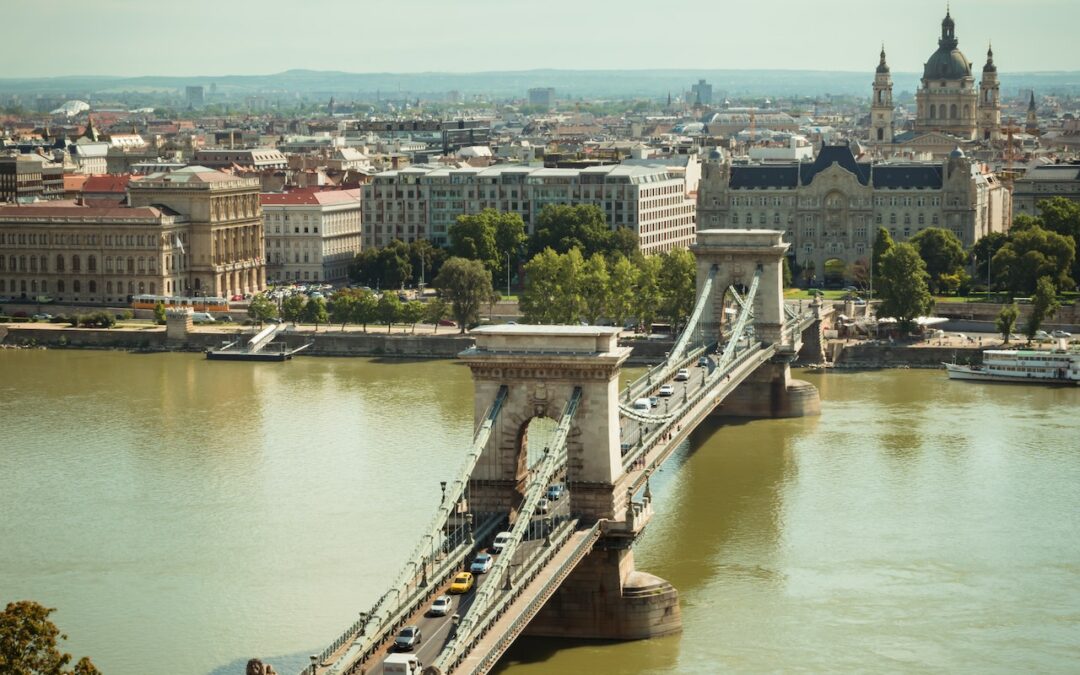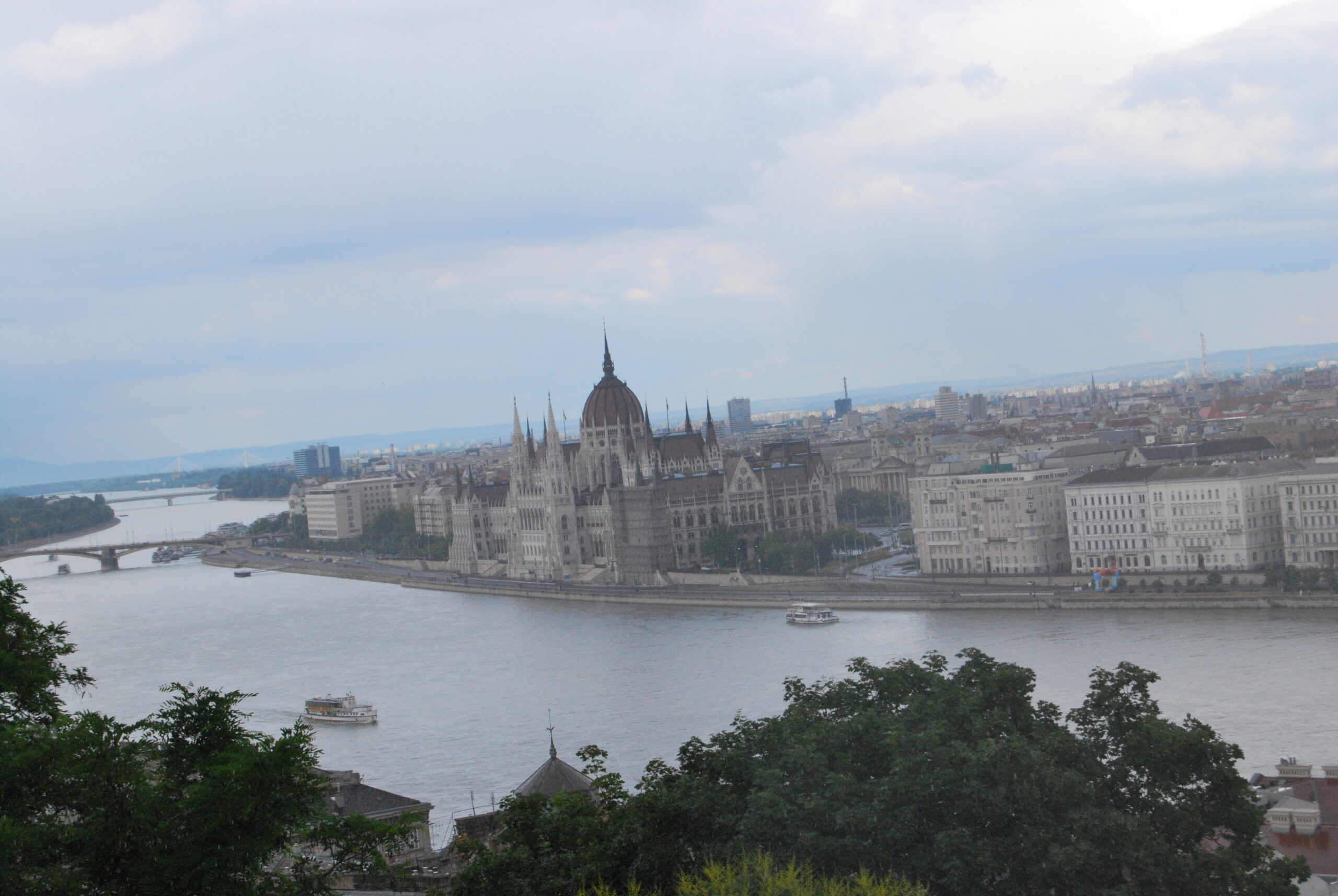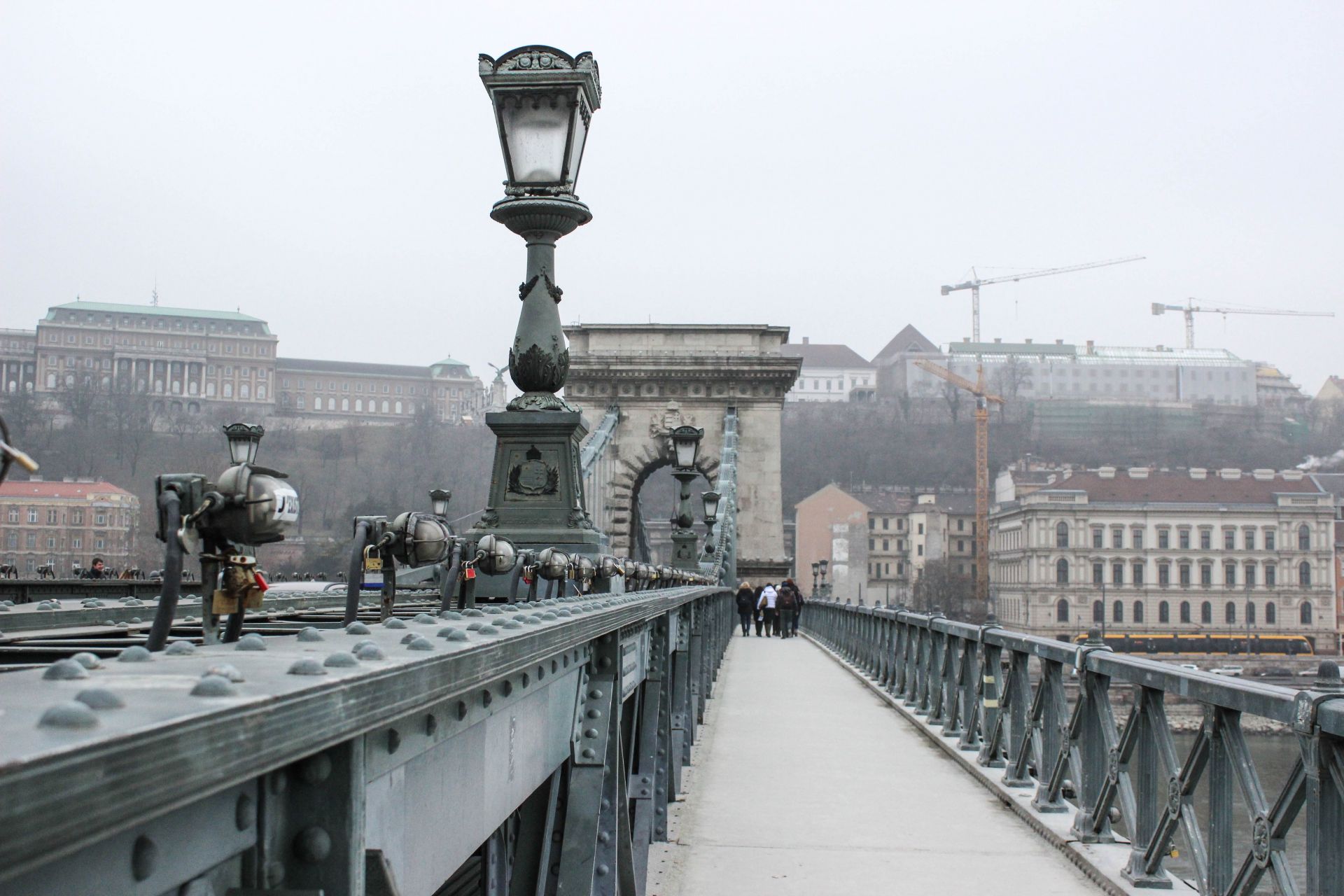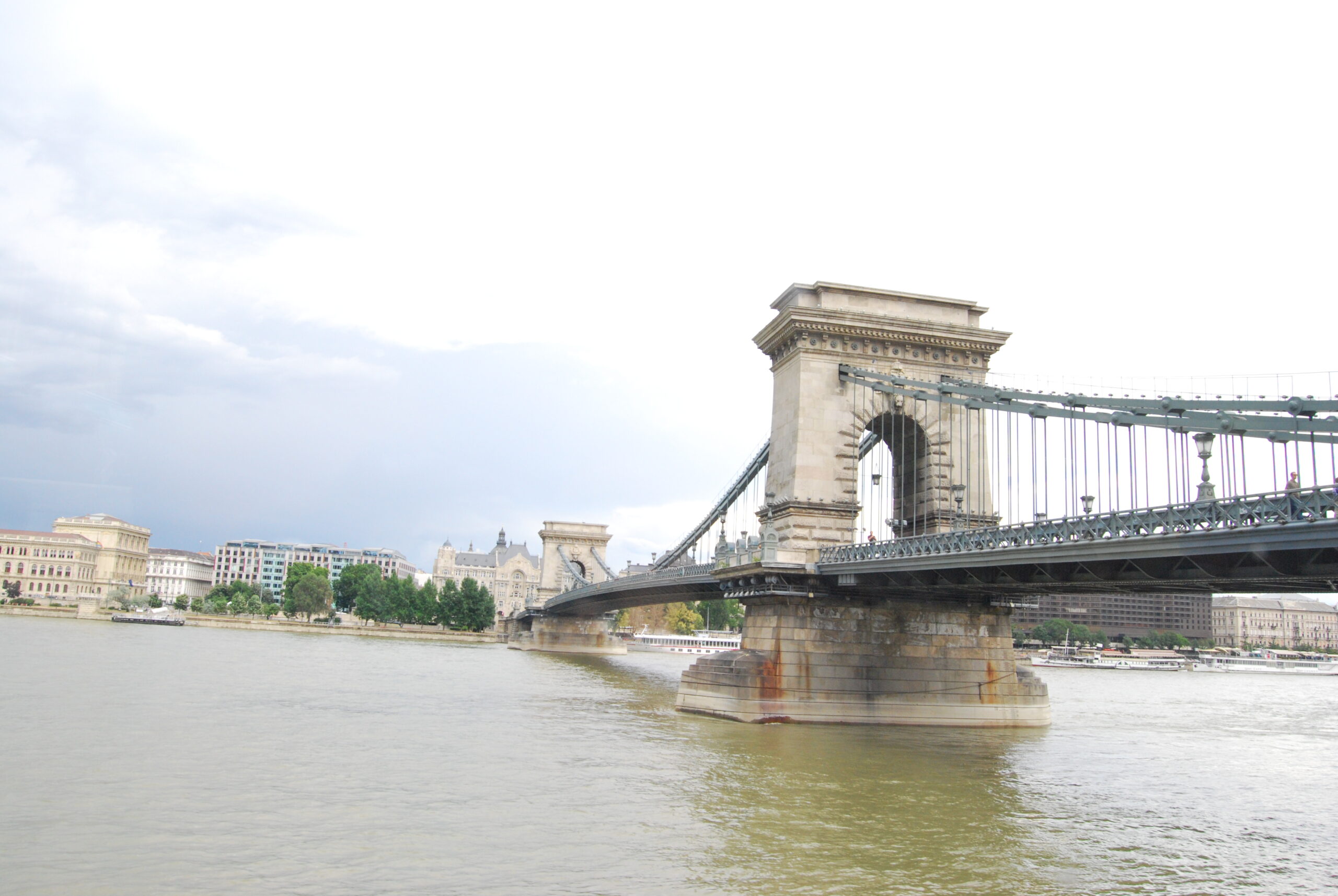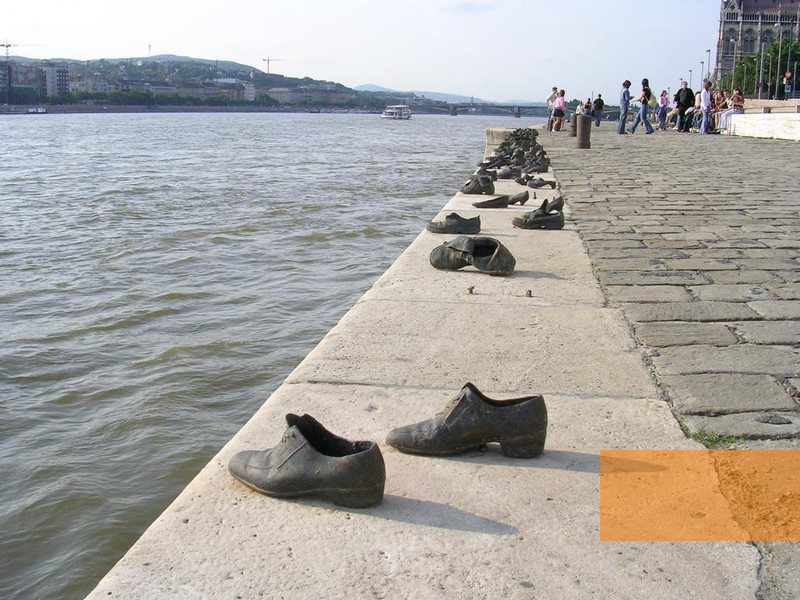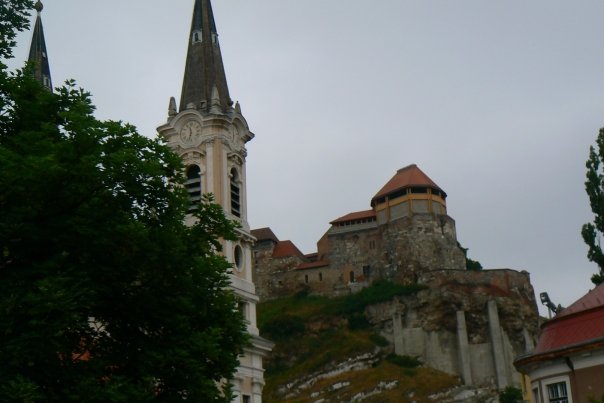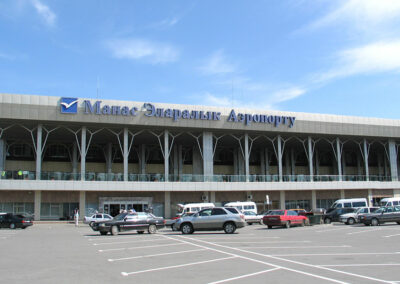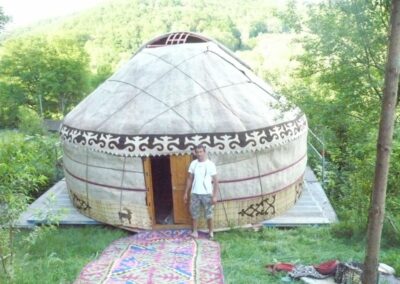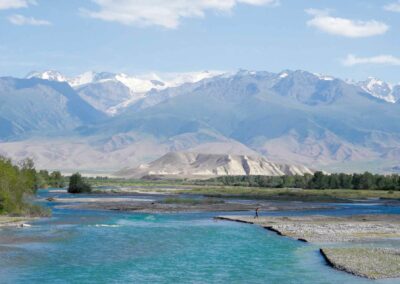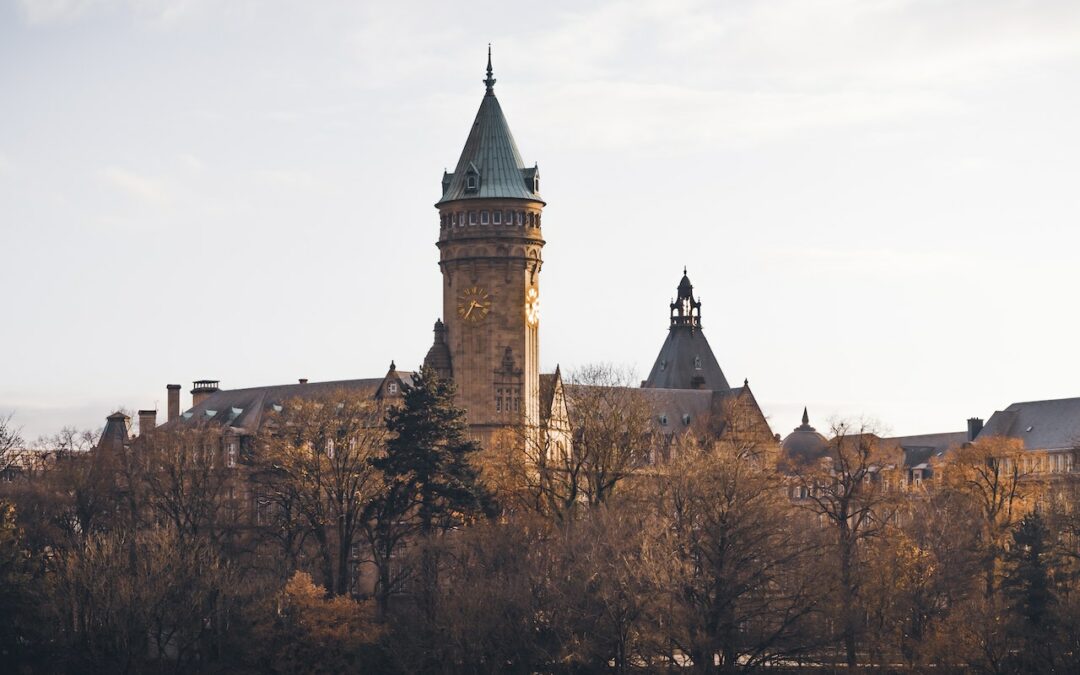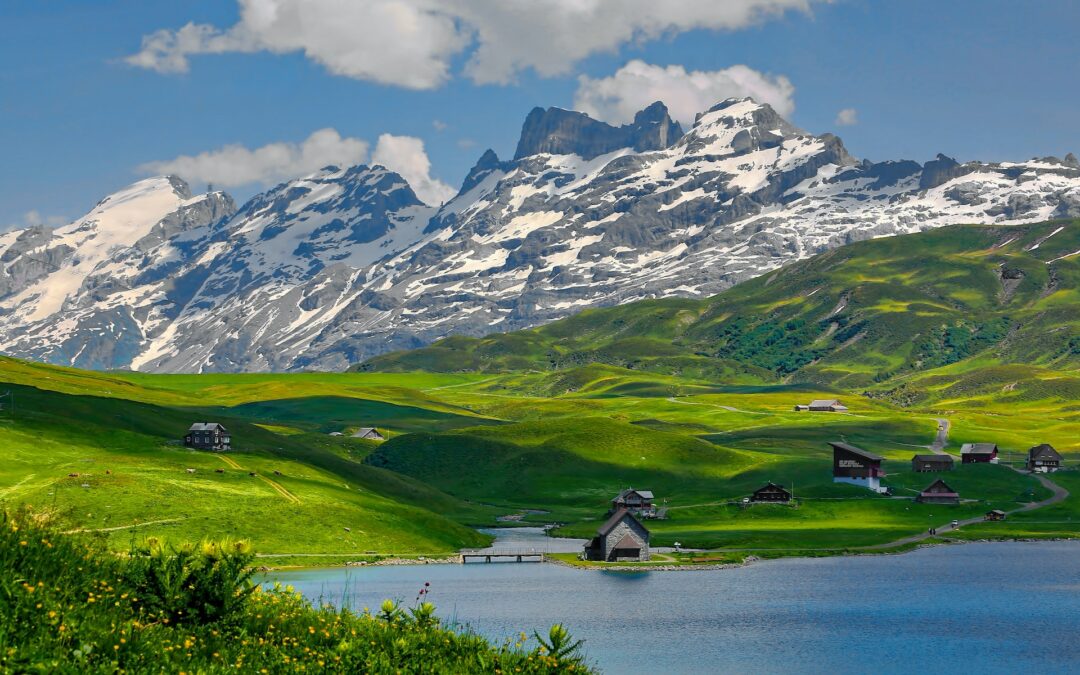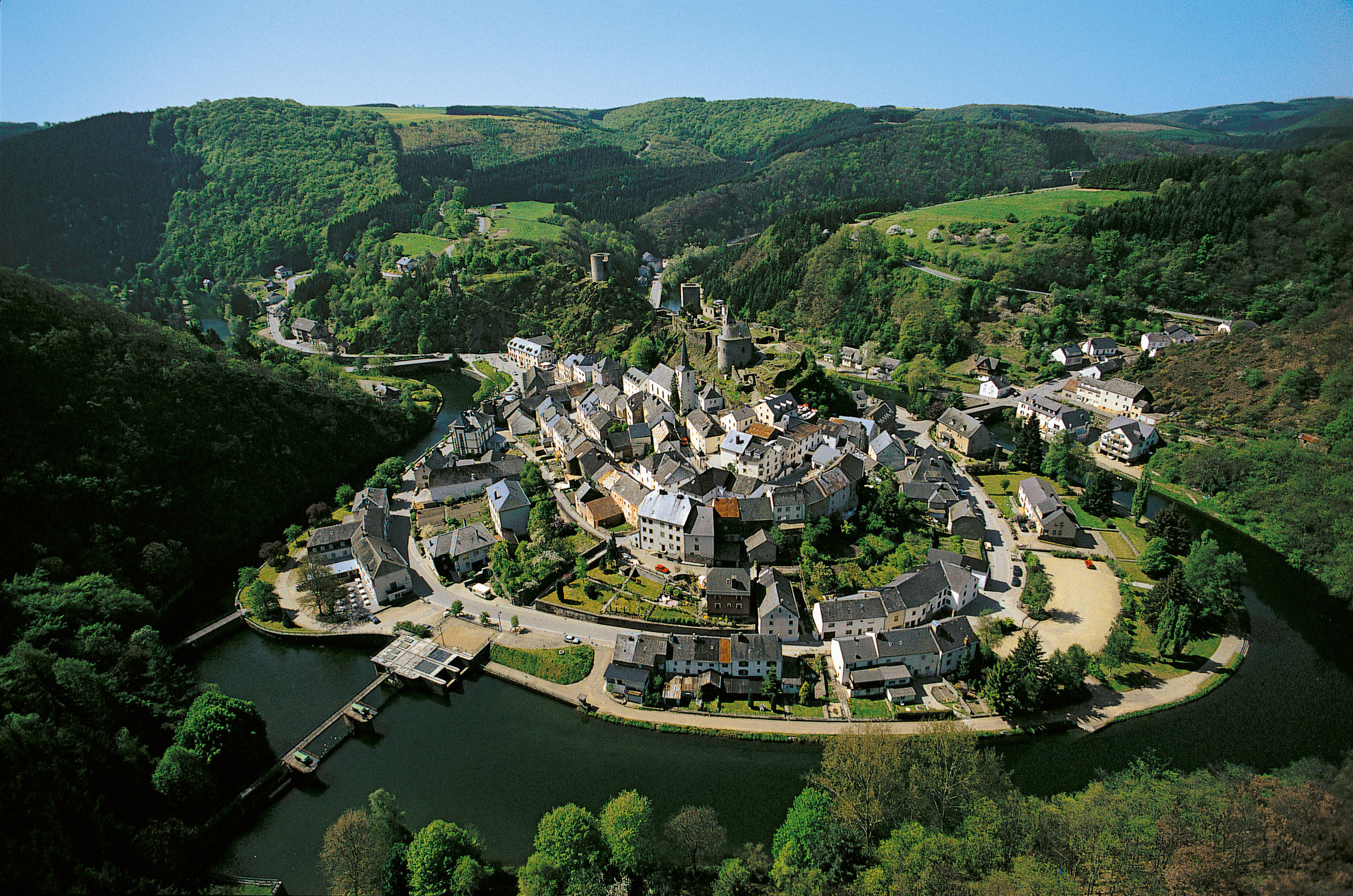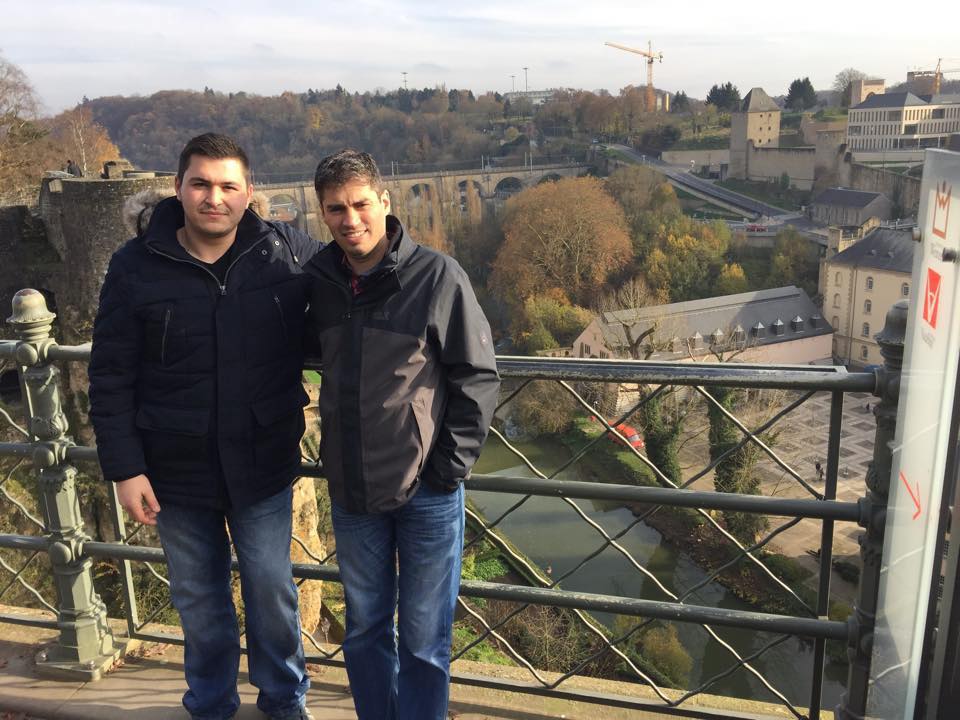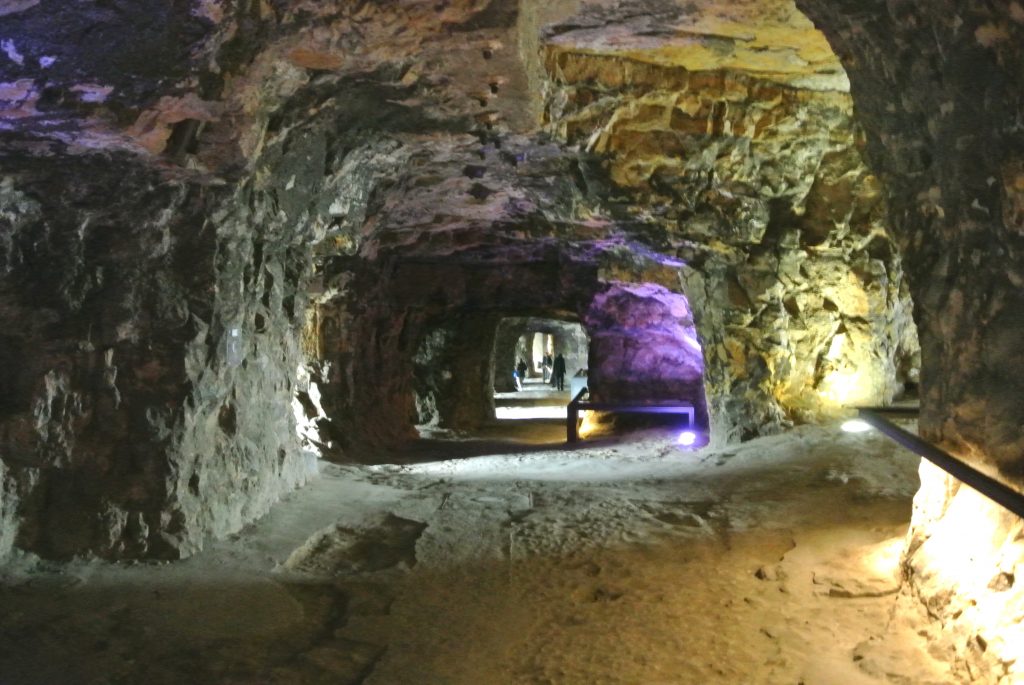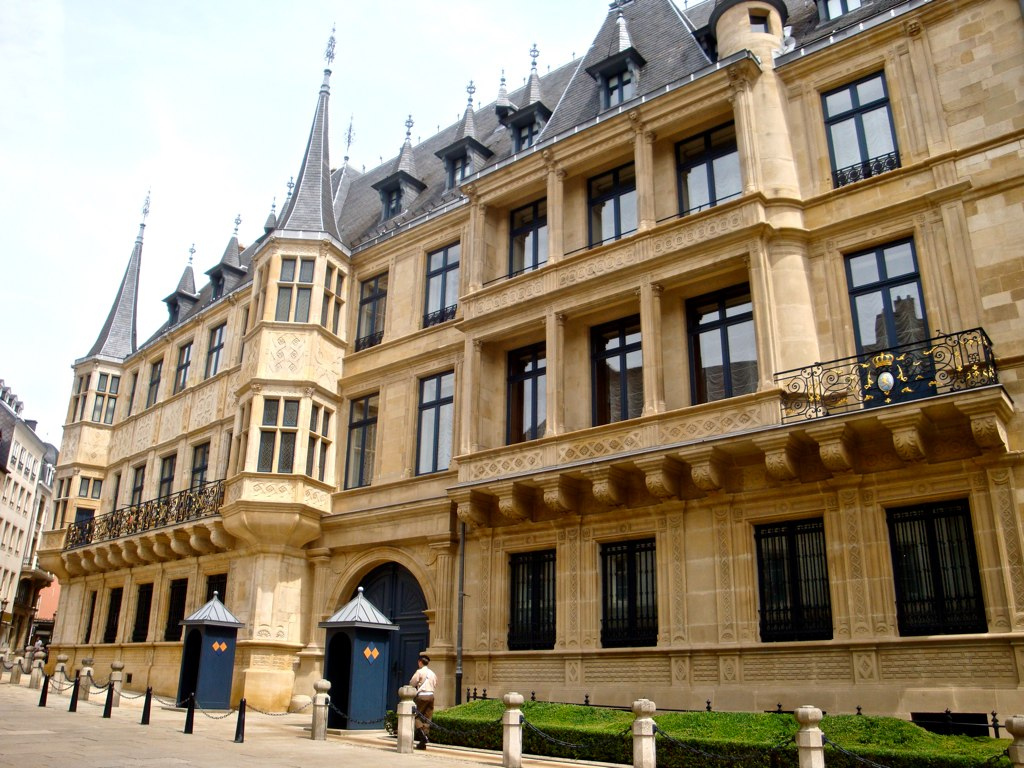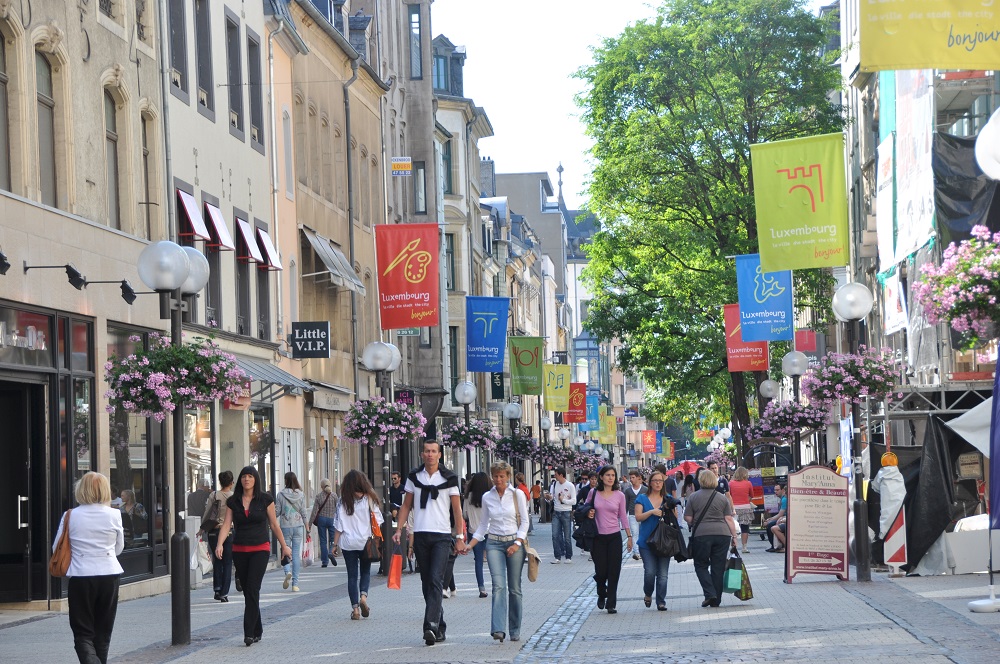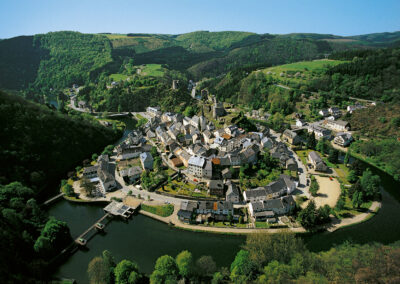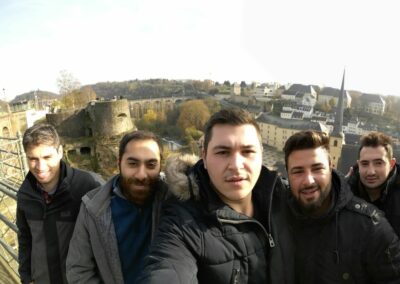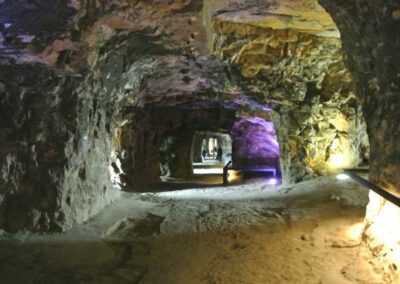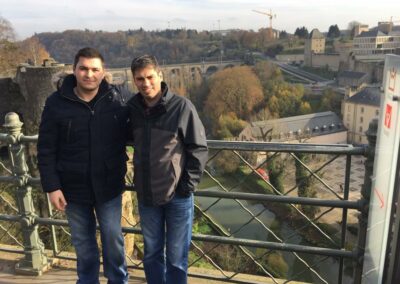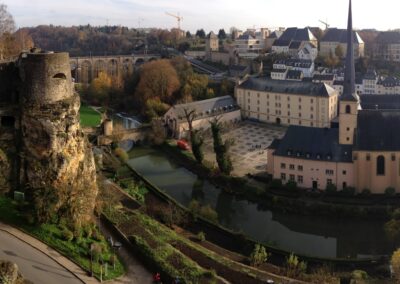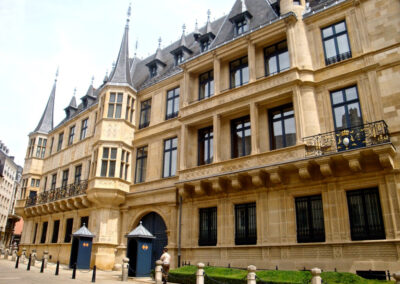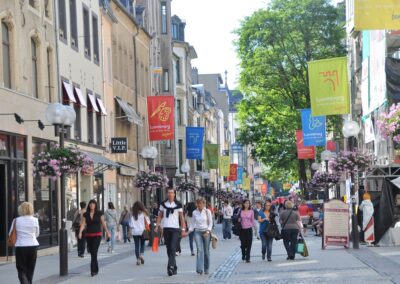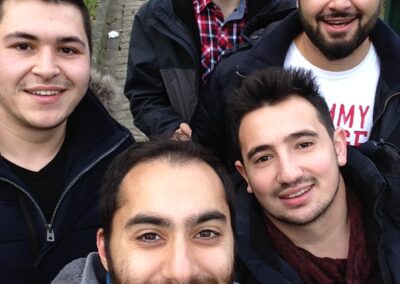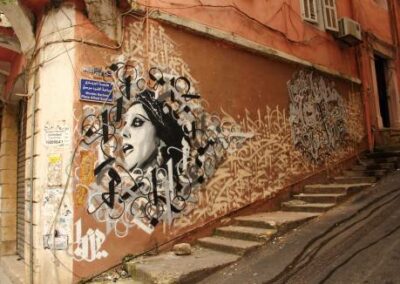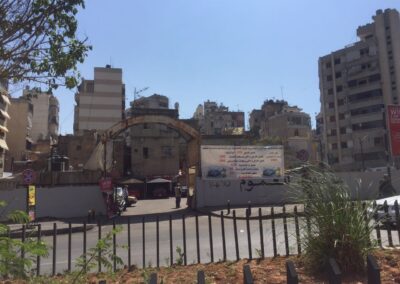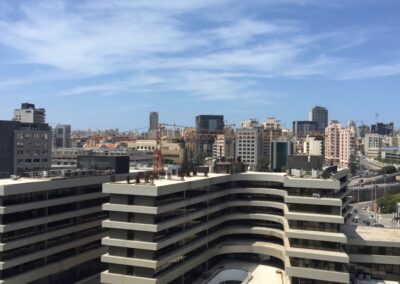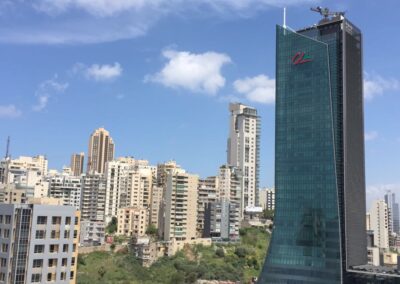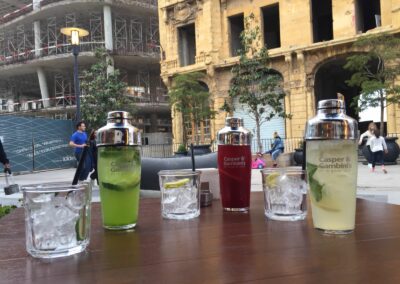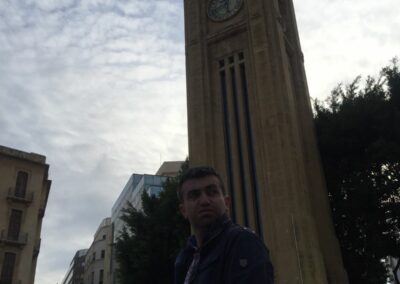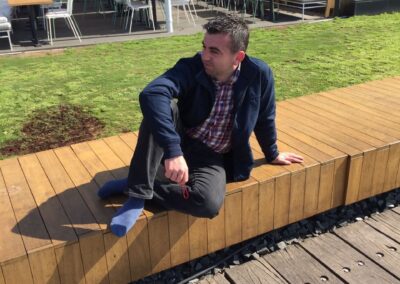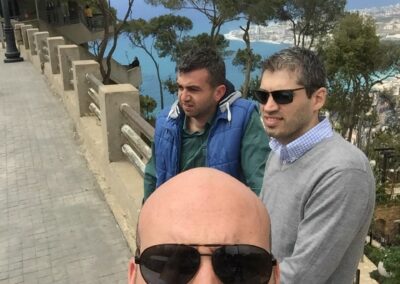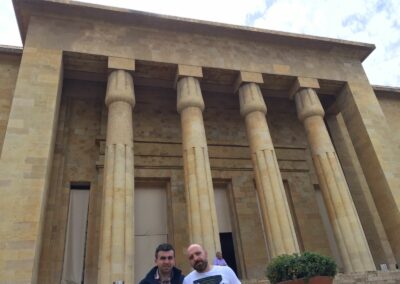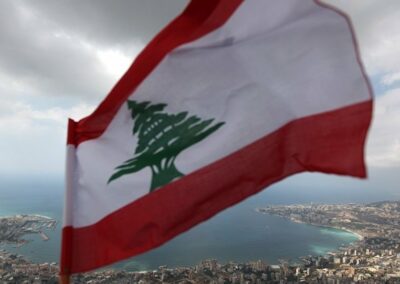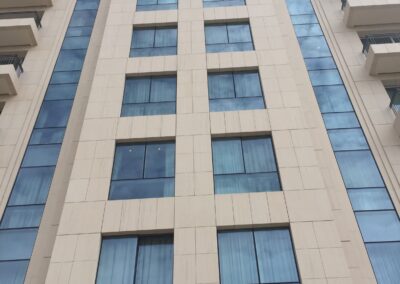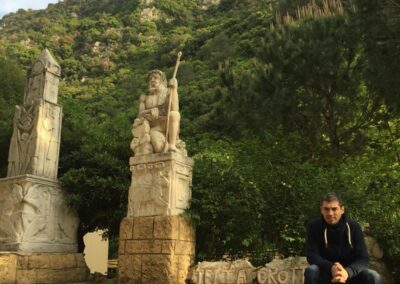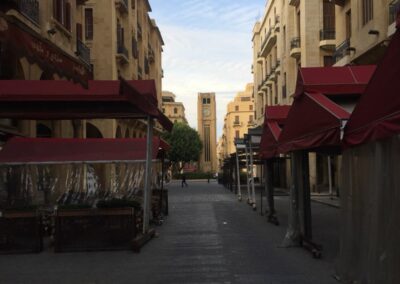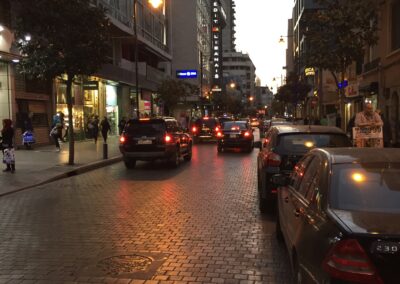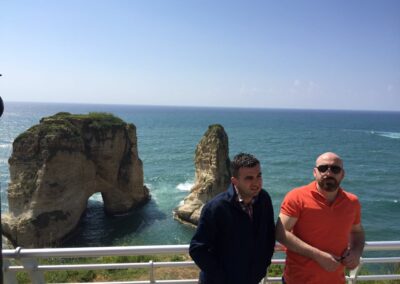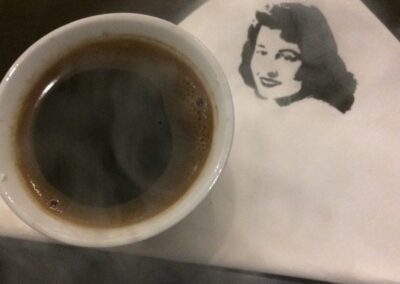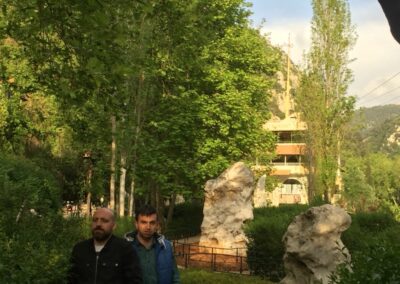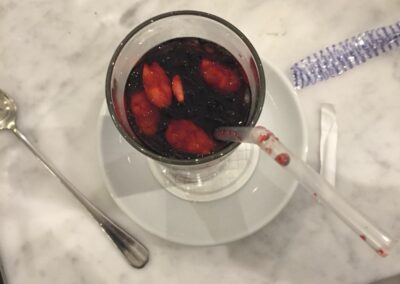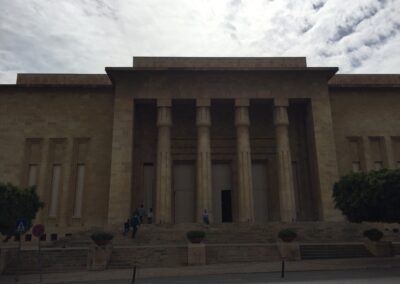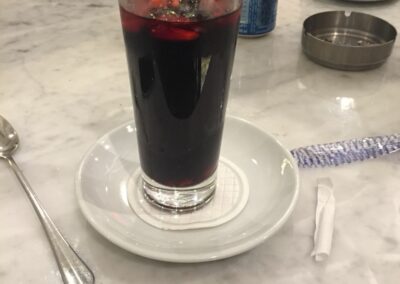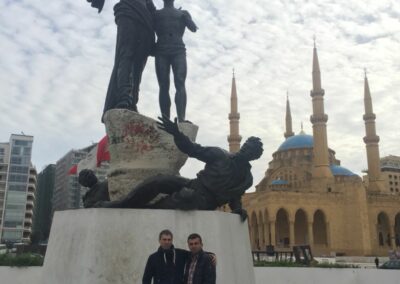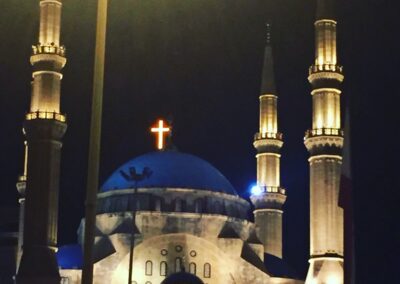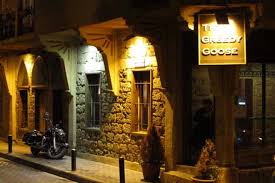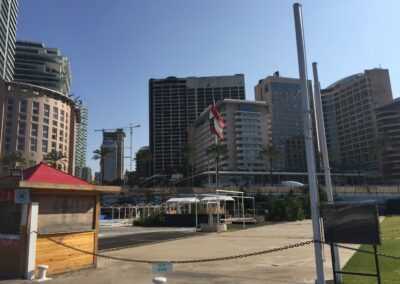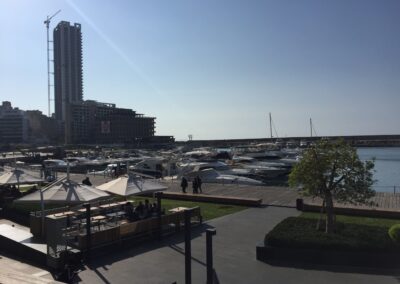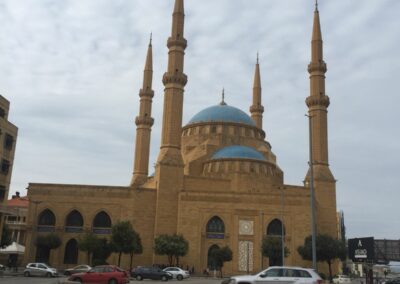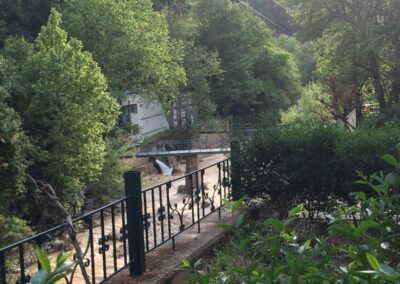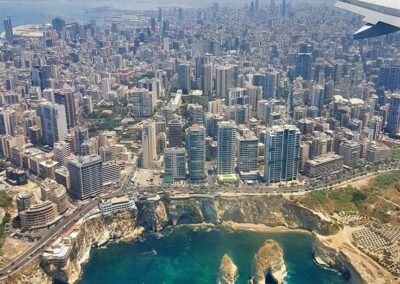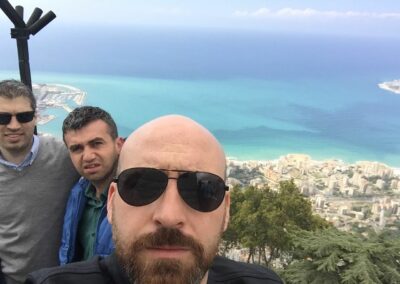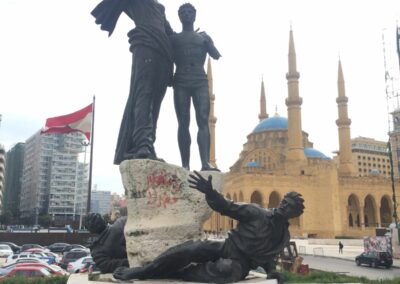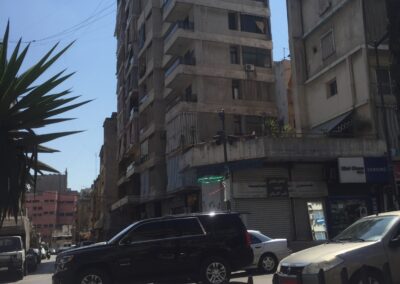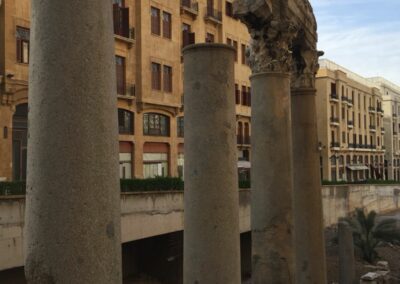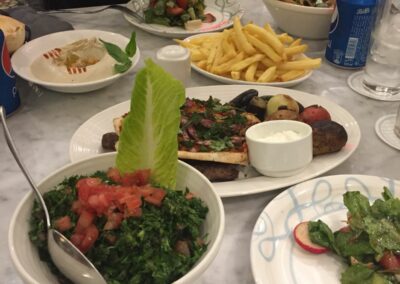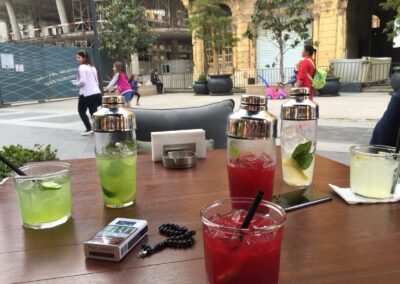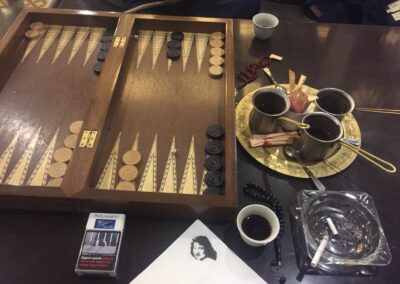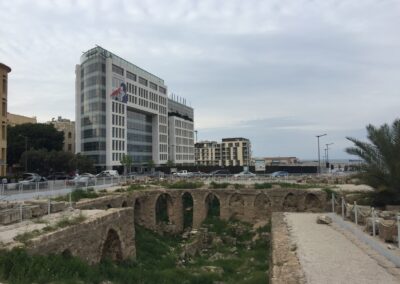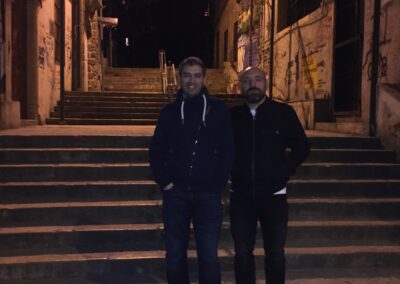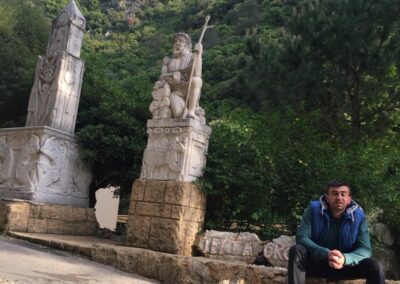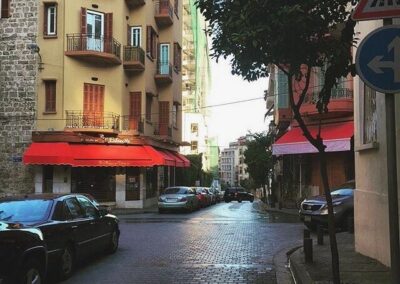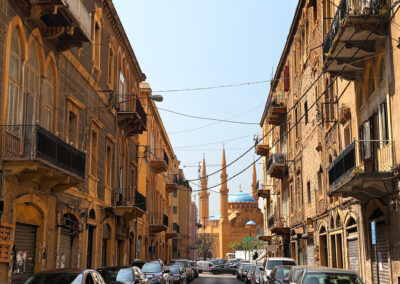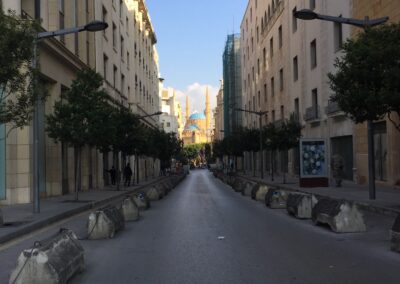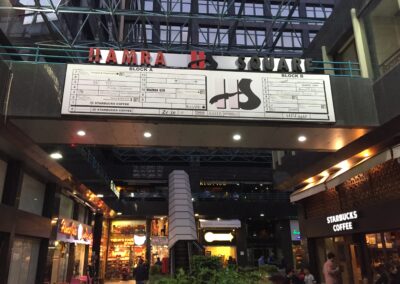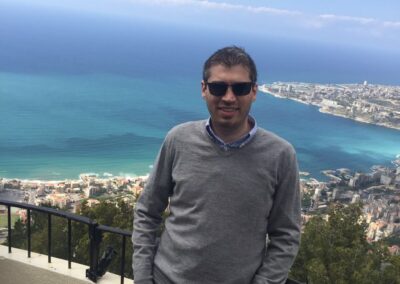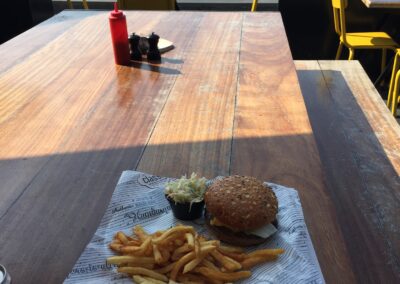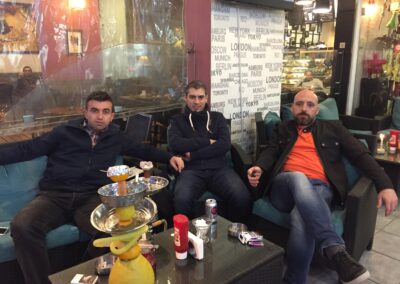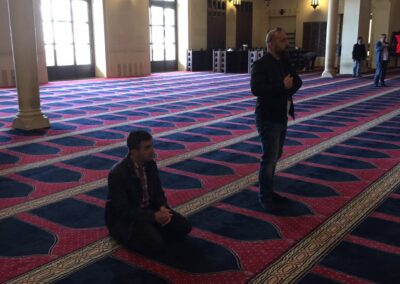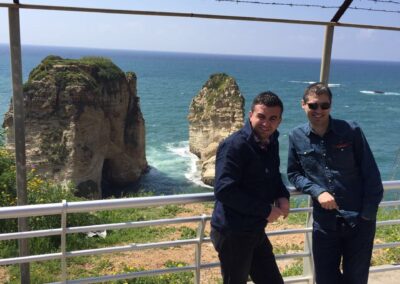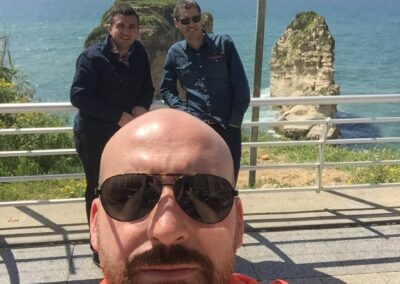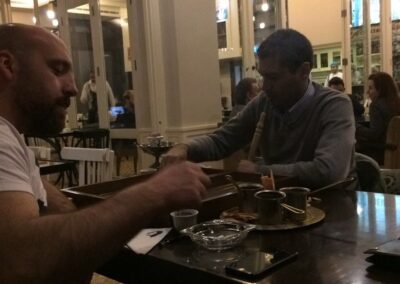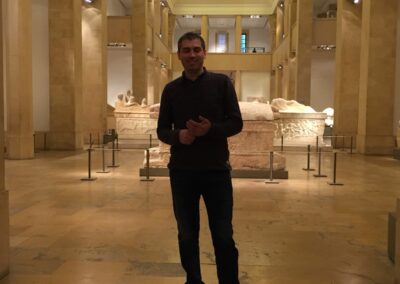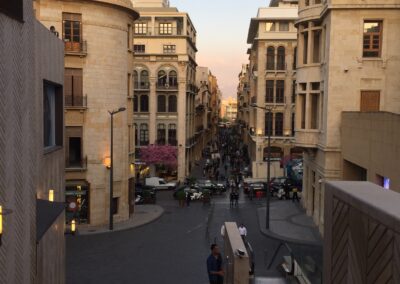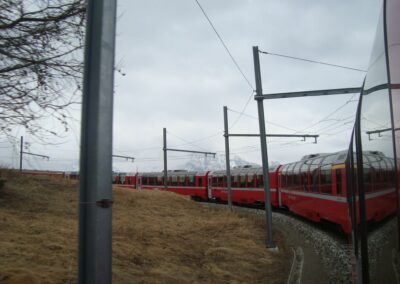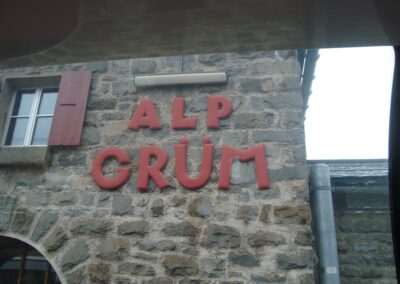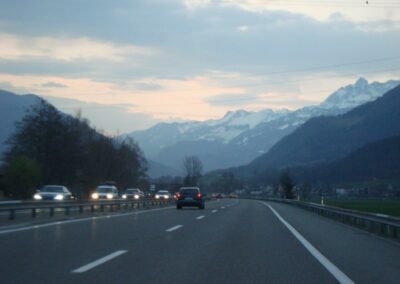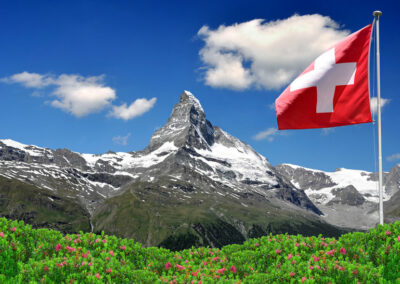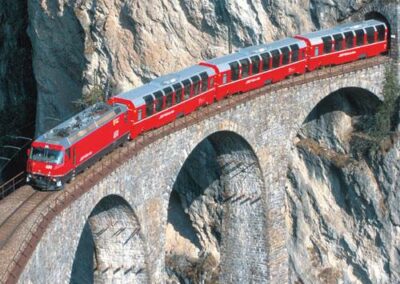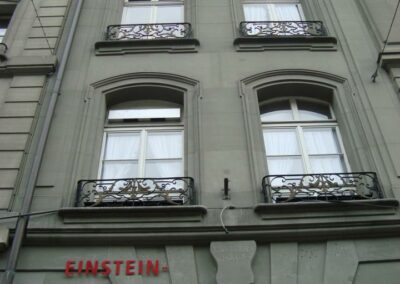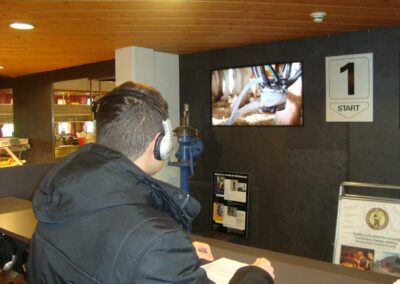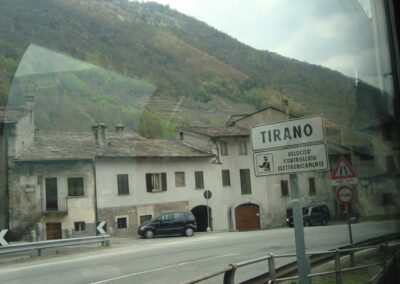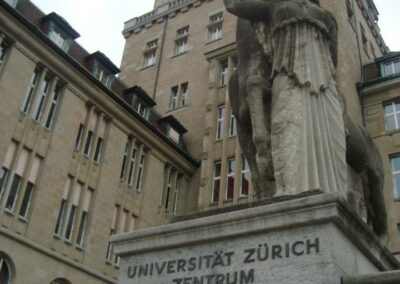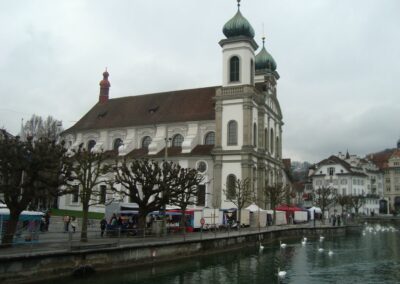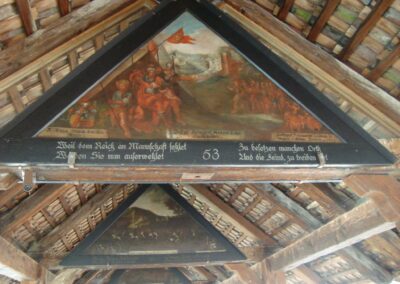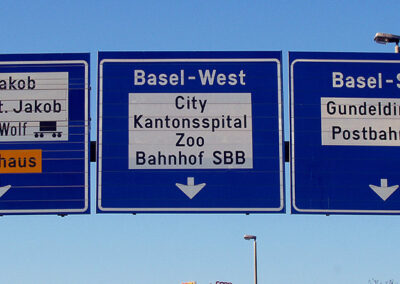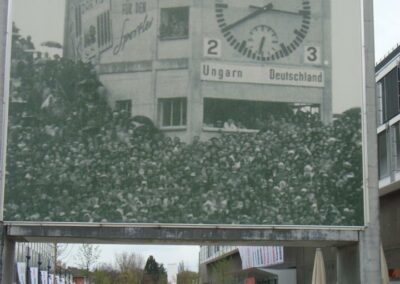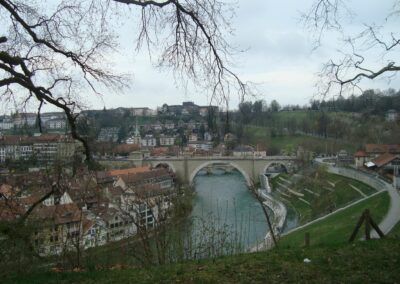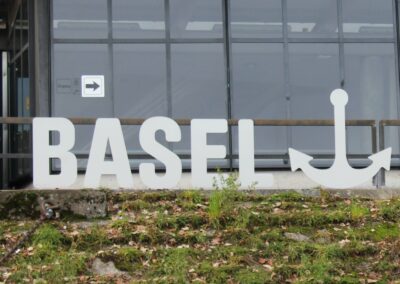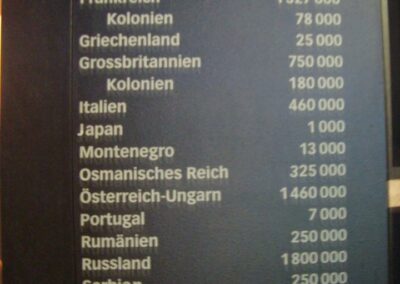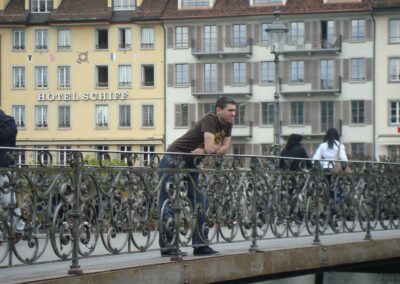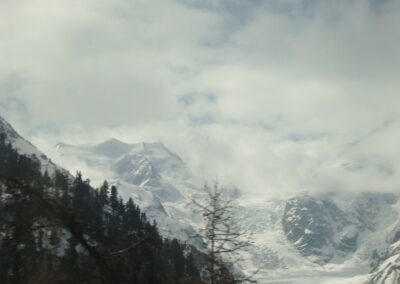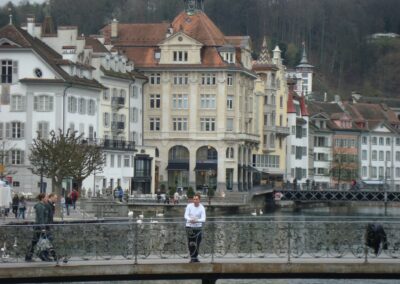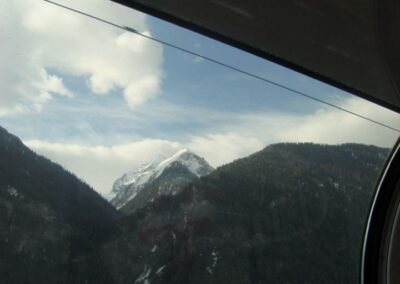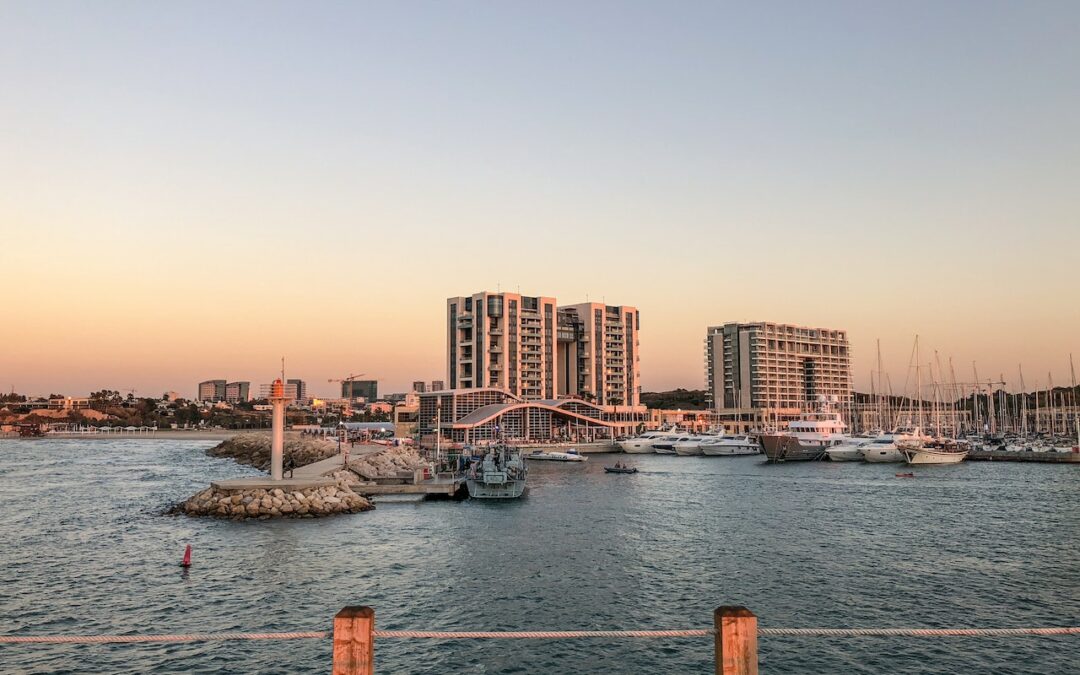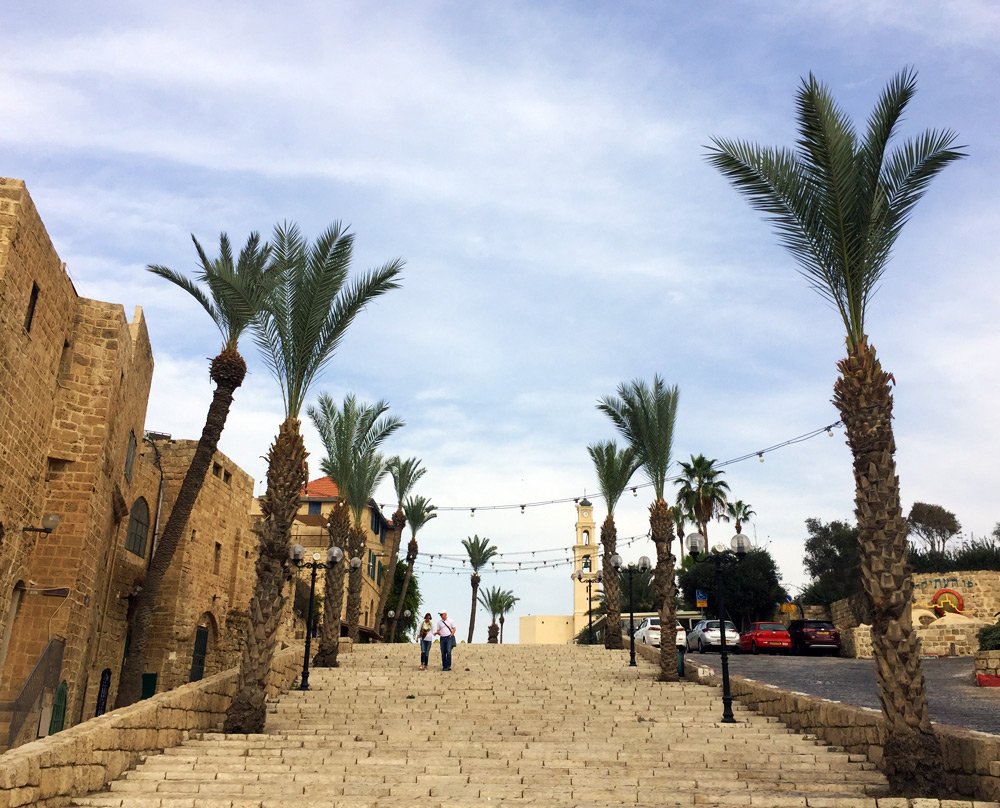Beirut The Paris of the Middle East
The capital of Lebanon. An ancient city that has been home to Egyptians, Phoenicians, Assyrians, Greeks, Turks, Romans, Byzantines, Arabs, French, and many other civilizations from the Stone Age to the present day. With a 5,000-year history, it promises a rich cultural experience. It offers a blend of French and Oriental cultures, appealing not only to the cultural enthusiast but also to nature lovers. The Mediterranean Sea beautifully surrounds the city like a painting. It is a place where the East and the West converge, but with a greater inclination towards the West. The city boasts a variety of luxurious restaurants, cafés, bars, and entertainment venues.
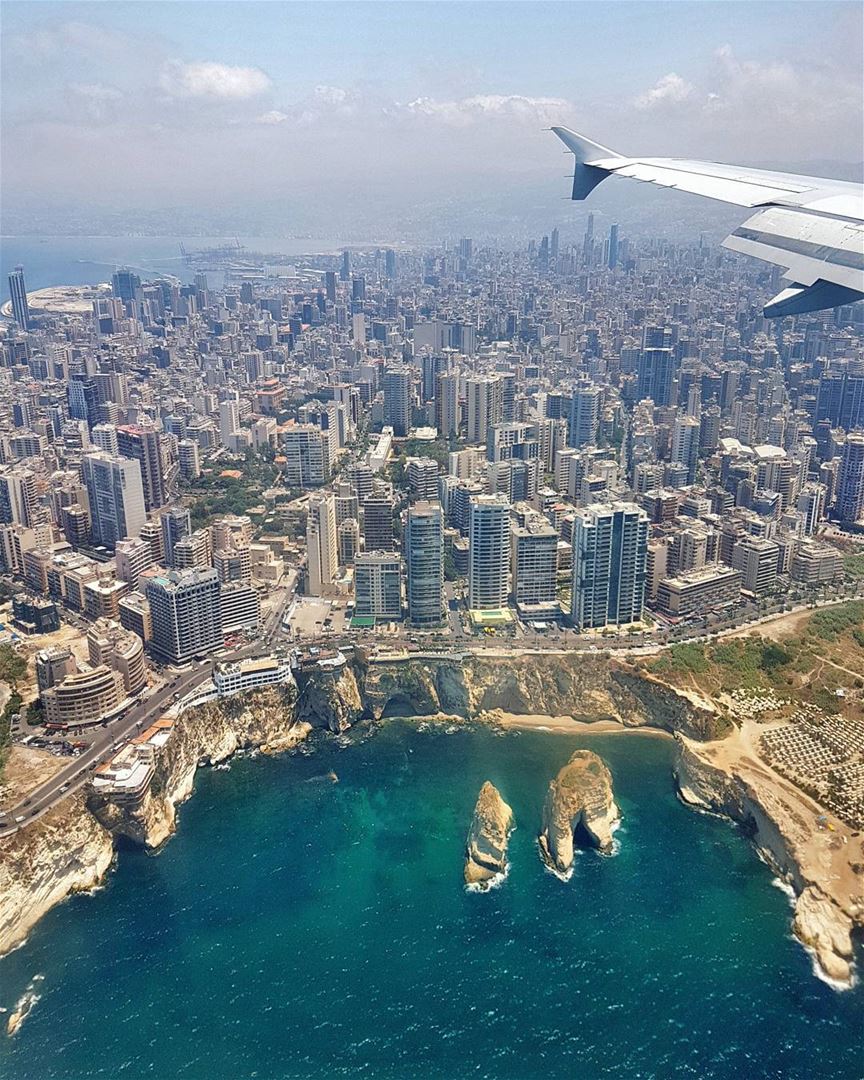
Ethnic Situation
Here, you will find a mix of many confessions and religions. 59% of the population is Muslim, 39% is Christian, and 2% is Jewish. It is a complex mixture where Sunnis, Catholics, Orthodox, Druze, Shiites, Armenians, Greeks, Copts, Chaldeans, and Syrians live together. The situation is so intricate that parliamentary sessions are held in three languages: Arabic, French, and English.
Civil War
Currently, everything seems calm, but this city experienced a 16-year civil war (1975-1990). Traces of the war can still be seen in many places in the city. If you are interested in understanding the complexity and intricacies of the war, you can search for “Lebanese Civil War” on Wikipedia. It involved Lebanese forces, Israeli forces, the United States, the United Nations, Palestinian organizations, Hezbollah, Iranian forces, Syria, France, and small militia groups. The war was so complicated that the frontlines would often shift. This means that one day, you could be fighting alongside the French on the side of the Lebanese Front, and the next day, you could be fighting against the Lebanese Front alongside Palestinian forces. Although the war is perceived as a conflict between confessions, it was much more than just a sectarian conflict. It was a harrowing experience with suicide bombings, massacres, mass killings, suicide attacks, genocide, kidnappings, and numerous human rights violations.
Transformation of Beirut
After the war, Beirut quickly developed and transformed into a modern Western city. The city healed its wounds rapidly and became a true tourist destination. Beirut is now famous for its beaches, cafés, and nightclubs. Walking along Hamra Street, you can feel like you’re in a capital city in Europe. Along the coast (Corniche), you’ll find expensive and luxurious villas. It’s a place where Arab sheikhs invest, and the French also show great interest. In Beirut’s harbor, you can see luxurious yachts that are rarely seen elsewhere. I’ll provide more detailed information as I introduce the attractions. We went on a 4-day trip, so I recommend planning 3-4 days for your visit as well.
Even if Lebanon is not on your list of places to visit, your opinion might change after visiting Beirut 🙂 .
Sights in Beirut
Hamra Street
The most famous and important street in the city. Here, you’ll find numerous hotels, shops, malls, cafés, and student dormitories. It is both a sightseeing and shopping destination, especially for tourists. Until 1975, it was the shopping hub of the Arab world. However, with the outbreak of the civil war, it fell into oblivion. Here, you can try the culinary delights of Lebanese culture. Compared to other shopping streets in Beirut, which usually feature new restaurants and fast-food chains, Hamra Street offers a different experience.

Pigeon Rocks
We can consider it as the symbol of the city. It is located on the western coast of the city center, featuring large rocks in the middle of the sea. It is a must-visit spot for anyone coming to Beirut, where people often stop and take photos, similar to the red telephone booths in London 🙂 Right next to it, there is Bay Rock and another café. You can sit in one of the cafés, enjoy a shisha (water pipe), and watch the sunset. Speaking of shisha, Lebanon has a strong shisha culture, and you can find shishas being sold in every café, restaurant, and kiosk. Even in fast food places, you’ll be immediately offered a shisha. However, I wasn’t impressed with the quality of the shisha. If you look closely, you can also see bullet and grenade marks on the rocks from the war. I don’t understand why someone would shoot at the rocks. This could be your first stop in Beirut.

Zaitunay Bay
The marina of Beirut, surrounded by a promenade and fast-food joints. You will see luxurious yachts here. The surrounding cafés are top-notch. This is where you can witness the new Beirut. If you had only visited this place, you wouldn’t believe that Beirut had a 16-year civil war. Opposite the harbor, there are luxurious apartment buildings with terraces facing the harbor. We asked about the prices, and the average 300-square-meter apartments start at 1.5 million euros and can go up to 4 million euros. The owners of these apartments are mostly Arab sheikhs and French. It’s a beautiful place to relax and take a stroll.
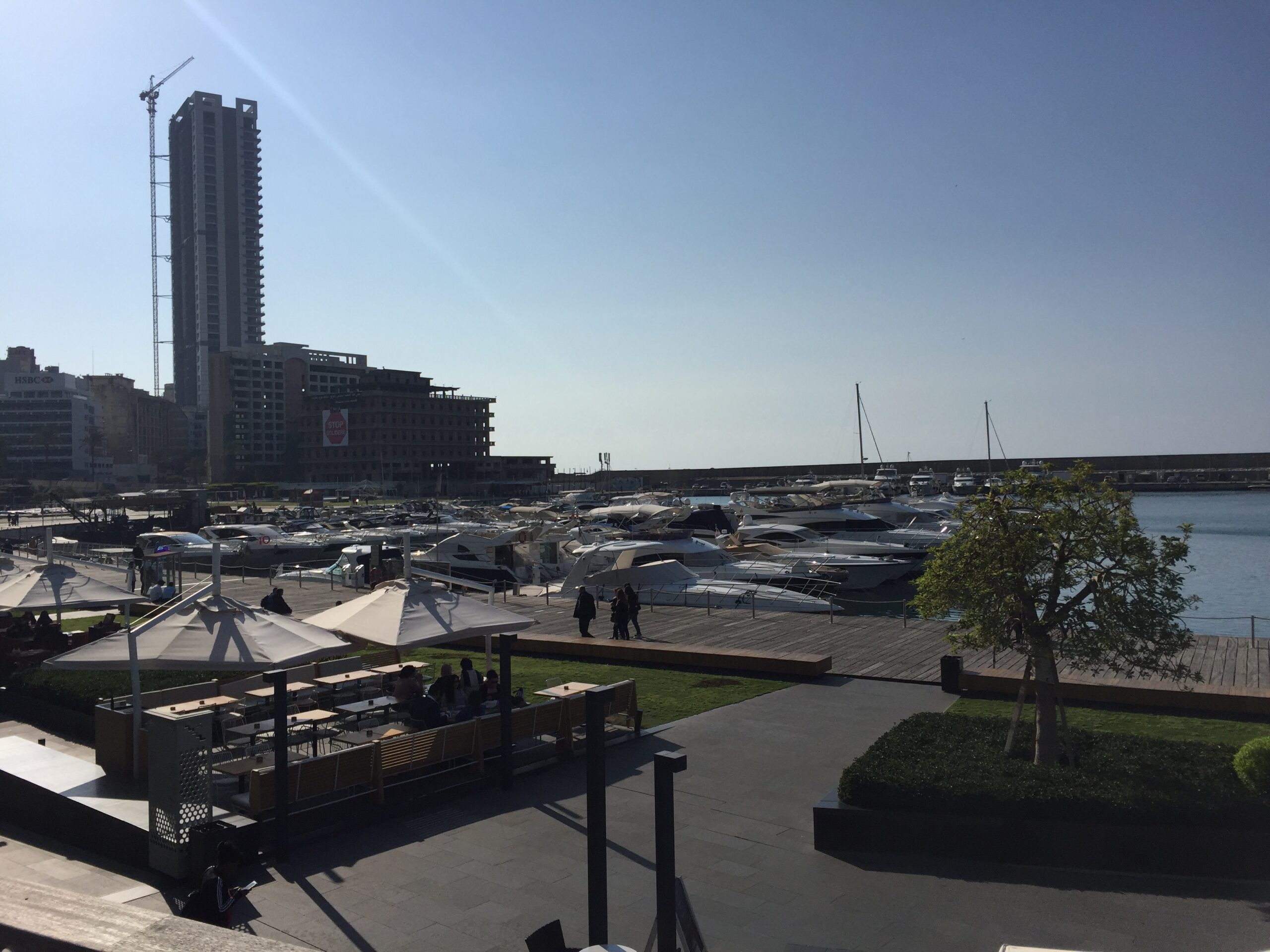
Beirut souks
The modern shopping street of Beirut. Here, you won’t find anything that reminds you of traditional Arab culture. If you imagine fragrant spice shops, you’ll be disappointed. There are very expensive brands, tourists, cafés, and playgrounds. If you enjoy shopping and are financially well off, this is a place you can visit. We wandered around and had a drink at a café.
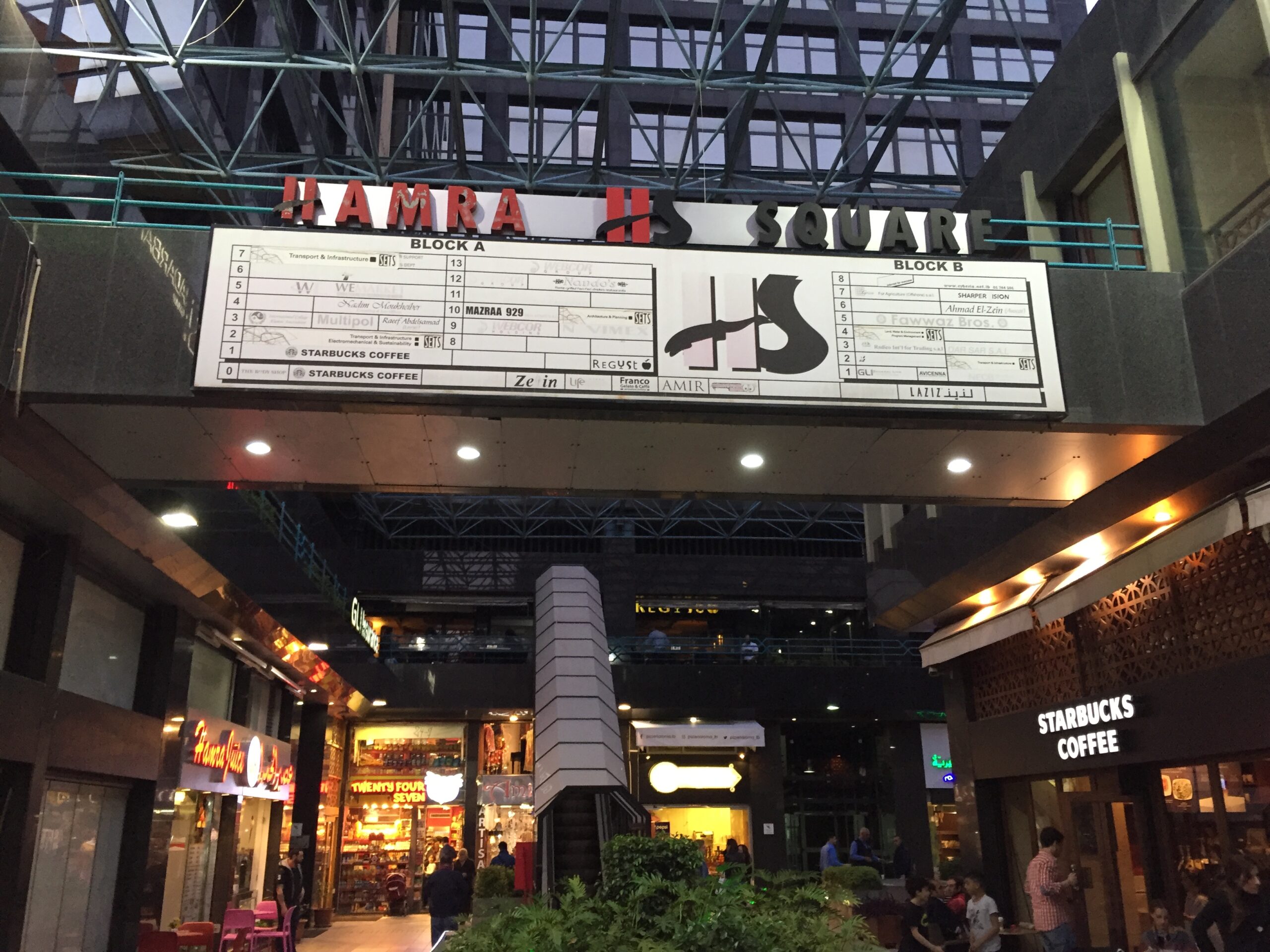
Monot Street
The place where Beirut’s nightlife pulsates. It is located in the eastern part of the Christian settlement. However, don’t come here with high expectations. You won’t see lively streets with people dancing and partying like in Europe. All the clubs are indoors. If you don’t know the places and simply stroll along the street, you might find it quite dull. As far as we could see, pleasure and nightlife in Beirut always seemed to be in hidden places. Even on Monot Street, there was no movement, no excitement, no grandeur. We expected a bit more.
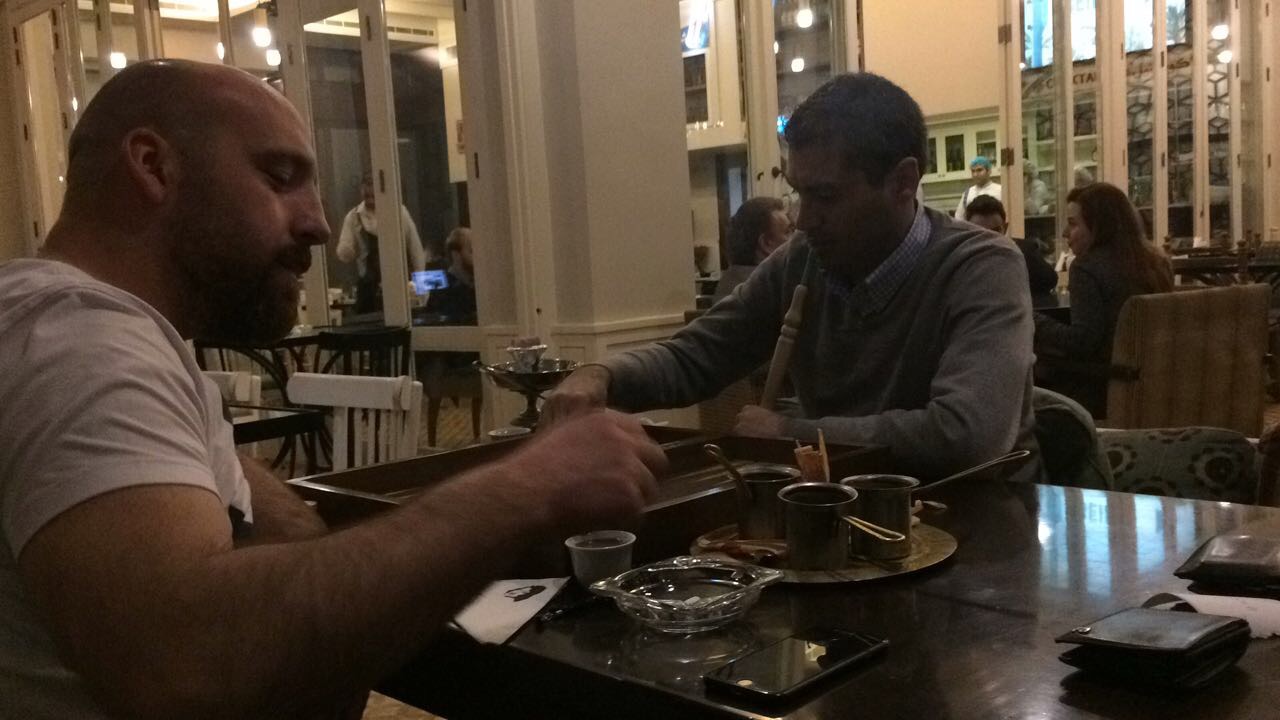
Nationalmuseum of Beirut
A museum showcasing archaeological findings from Lebanese history. The museum houses around 100,000 historical artifacts, including tombs, mosaics, jewelry, ceramics, and weapons from the Bronze Age, Iron Age, Hellenistic, Roman, and Byzantine eras. The National Museum of Beirut is one of the largest museums in the world. During the civil war, it was trapped between two fronts, resulting in significant damage. At the entrance door, a phrase stated, “This museum was not only a witness but also a victim of the war.” The artifacts were damaged during the war, so they were removed from the museum and stored in the basement. The massive walls that couldn’t be removed were protected with sandbags. Since some militiamen used the building as a barracks, it was often shelled. When the war ended in 1991, the building became unusable. It was restored between 1995 and 2000 and is now open to visitors.
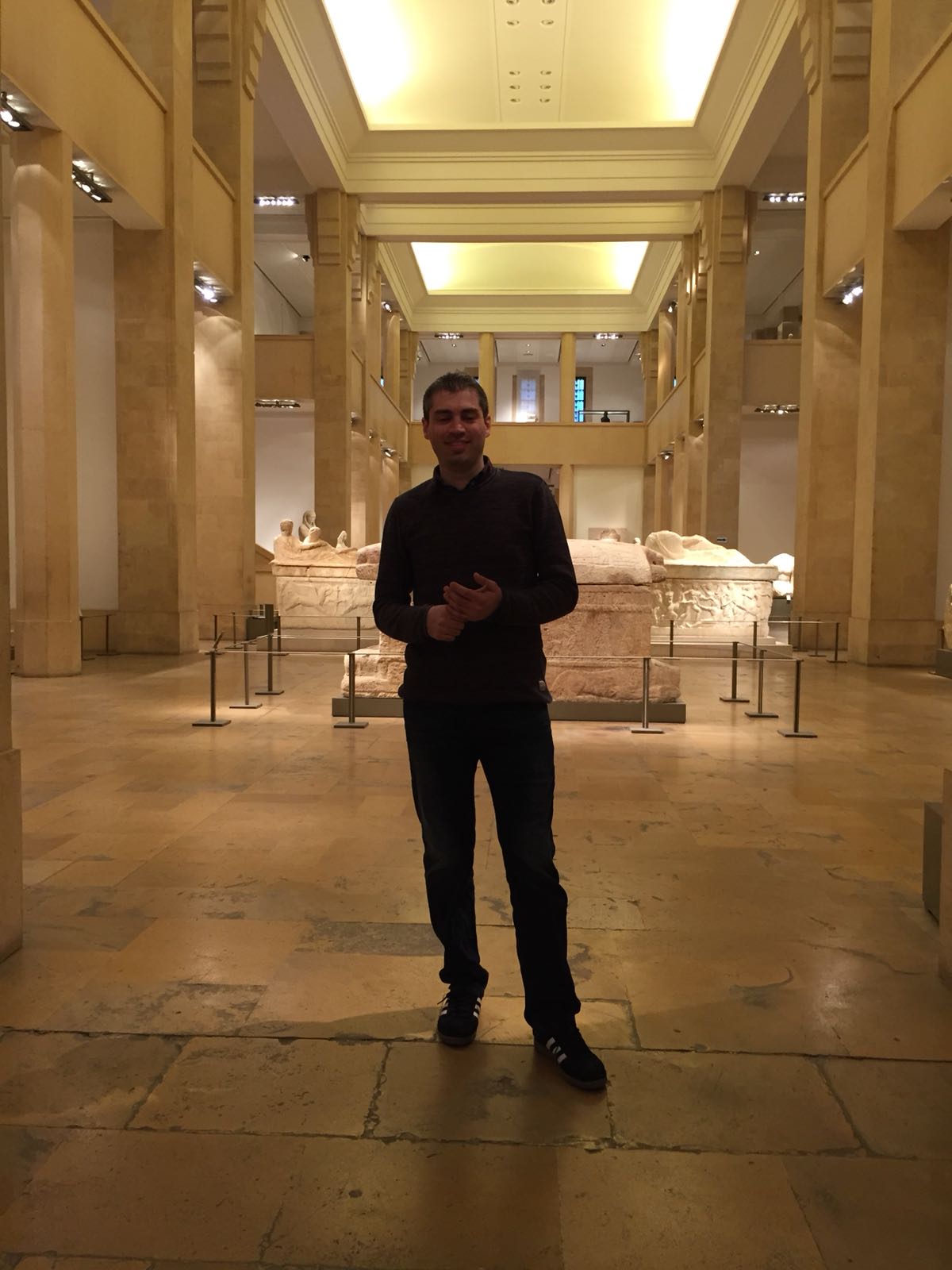
Place des Martyrs
A square that connects East and West Beirut. In the middle of the square stands the Martyrs’ Memorial. This monument was created by Italian sculptor Marino Mazzacurati. It was originally built in 1916 to honor Lebanese nationalists who were beheaded during the period of Ottoman rule under Cemal Pasha. The monument was also damaged during the civil war, with many parts of it riddled with bullet holes. The monument serves as a reminder of both the nationalists who were beheaded during Ottoman rule and the civil war. A short distance away is the notable Mohammed Al-Amin Mosque
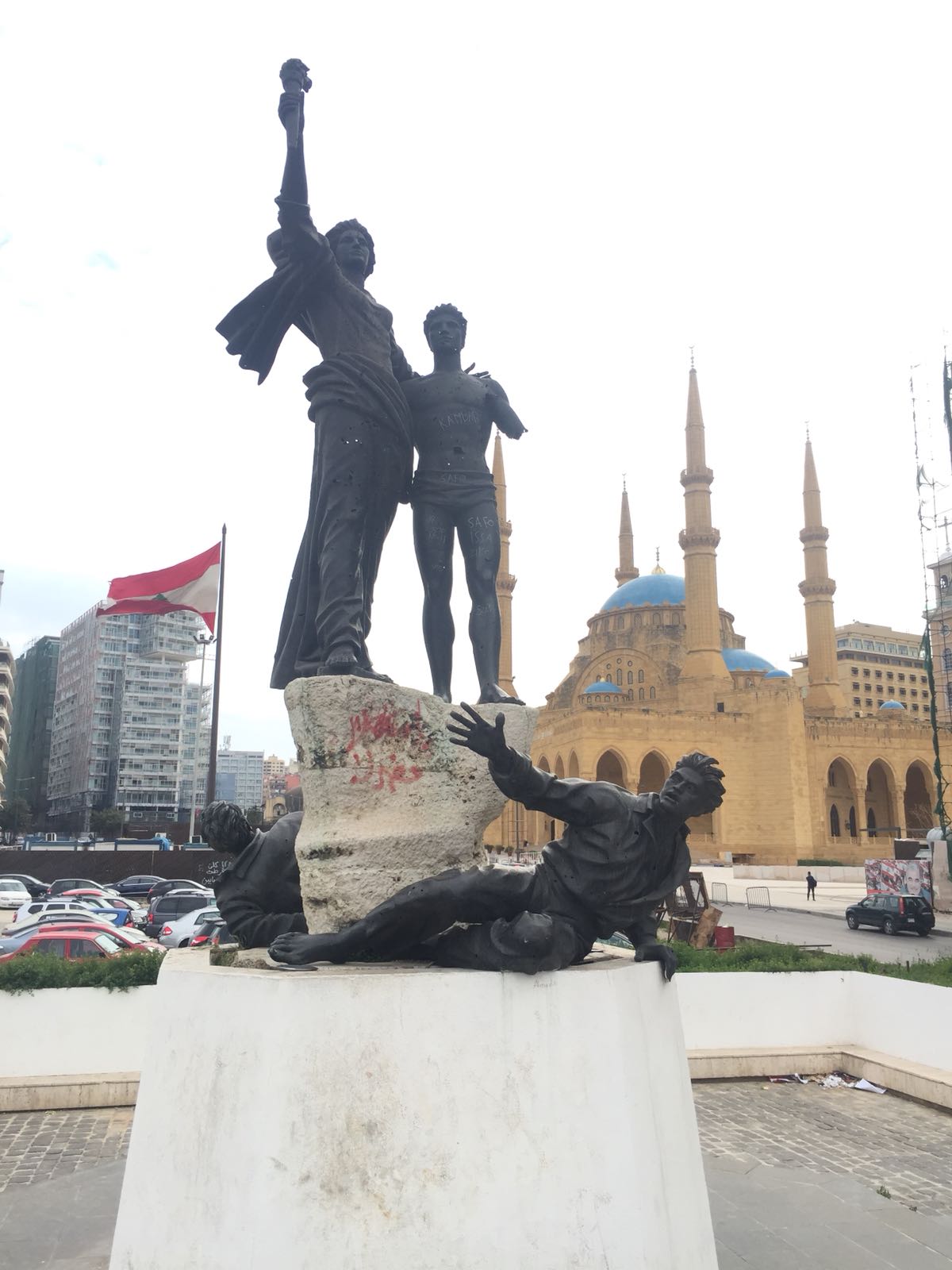
Roman Bath
An archaeological site containing the remains of an ancient Roman bath. The excavations are located outdoors and can be visited day and night. It is situated near the Martyrs’ Memorial, and if you are interested in archaeology, you can visit it along the way.
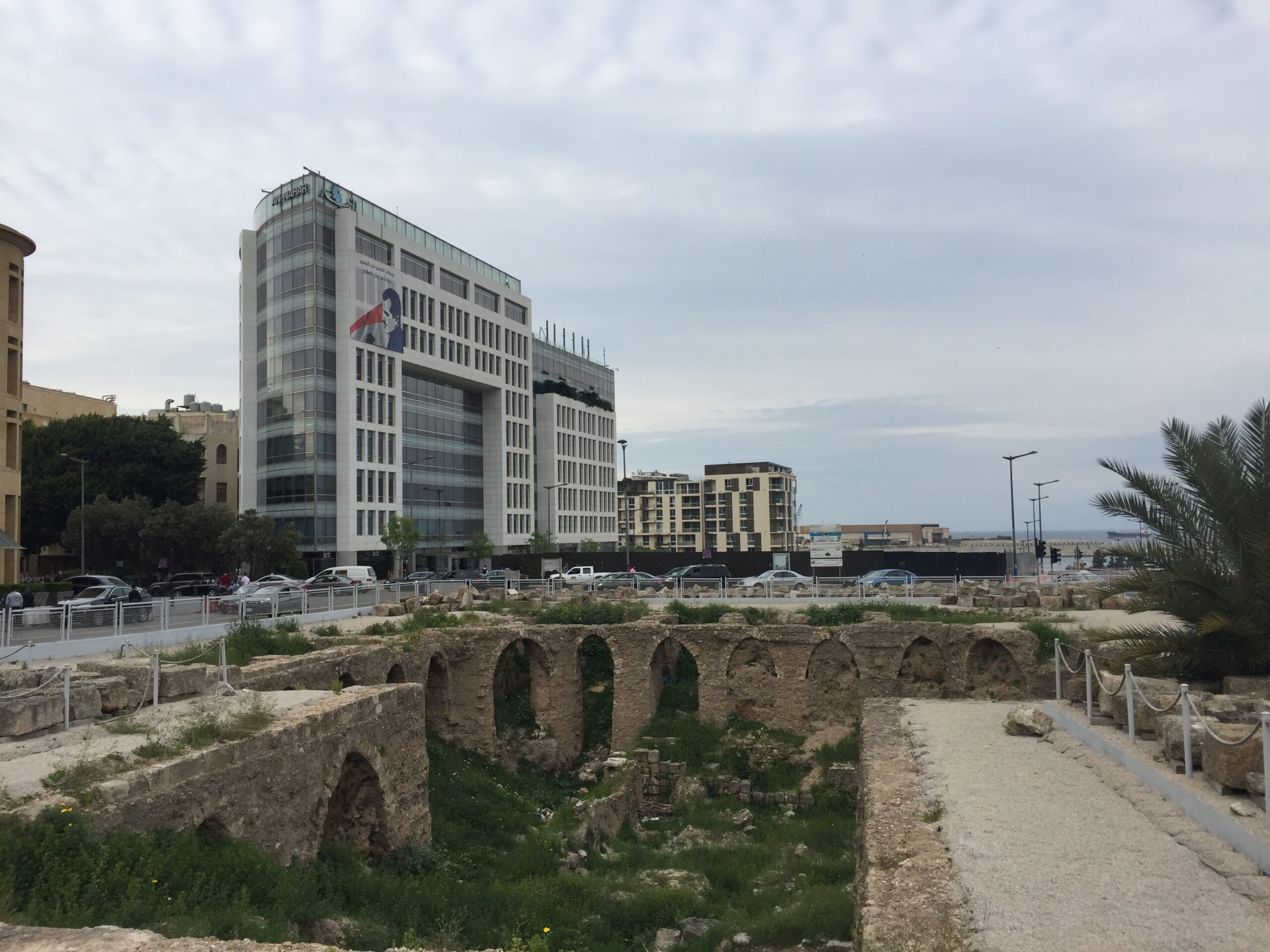
Downtown Centrum
One of the modern streets in Beirut. The street houses shopping centers, the Al-Omari Mosque, churches, synagogues, and the Parliament building. In the center of the street, there is a clock tower where the streets intersect. The clock tower was erected in honor of Abdul Hamid (there are different opinions on whether it was built by Abdul Hamid or after the end of the Ottoman Empire). The clock tower was dismantled during the war and stored in another location, then reassembled after the war. Beirut Souks and Yıldız Square are also located in Downtown. Being the Paris of the Middle East, this place is naturally referred to as the “Champs-Élysées” of the Middle East
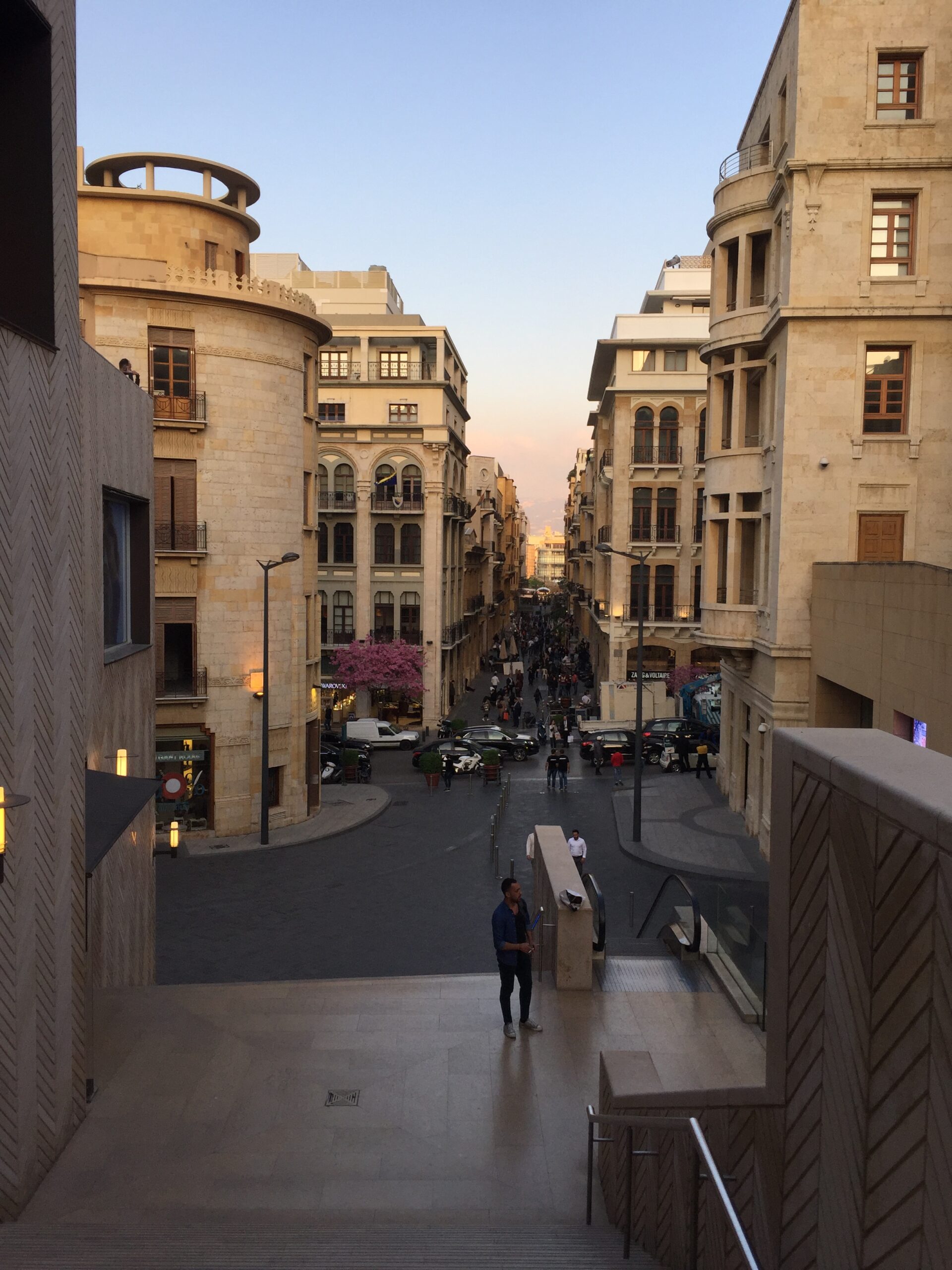
Harissa
A place you must visit if you want to enjoy a view of Beirut from above. It is located 20 minutes away from Beirut and is the site where Christians come for pilgrimage. You can take the cable car to go up. There, you will be greeted by a breathtaking view of the Mediterranean Sea. At the top of the hill, there is a giant statue of the Virgin Mary with outstretched arms, weighing 15 tons. In addition to the statue of the Virgin Mary, there is also a church. Below the church, there are cafés where you can enjoy tea, coffee, or shisha. The statue was erected there in 1908. Pope John Paul II visited the site in May 1997, and Pope Benedict XVI visited in September 2012. It is also a place visited by thousands of people daily. If you want to observe the synergy along the coast from Jounieh to Beirut, you should definitely stop by. For me, it is an absolute must in Beirut.
Jeita Grotto
A stalactite cave located half an hour away from Beirut. It is one of the most visited places in Lebanon and is considered one of the most beautiful caves in the world. It narrowly missed the 7 Wonders of the World competition. The total length of the cave is 9,000 meters. According to a measurement in one of the halls, the distance from the ceiling to the river is 108 meters. The cave is divided into an upper and lower part. In the upper part, you can visit the cave with its stalactites, and in the lower part, you can explore the river inside the cave with a small boat. After visiting the upper part, you can reach the lower part with a train built for tourists. The upper part is also home to the world’s largest stalactite, which is 8.2 meters high. It is forbidden to take photos inside the cave, and you must surrender your mobile phones and cameras at the entrance. There are also attentive staff members inside. You may initially wonder why you should visit a cave, but after touring it, your opinion will change. We set off early in the morning and visited both Harissa and Jeita Grotto in one day. I recommend doing it the same way so you can visit two important places in one day
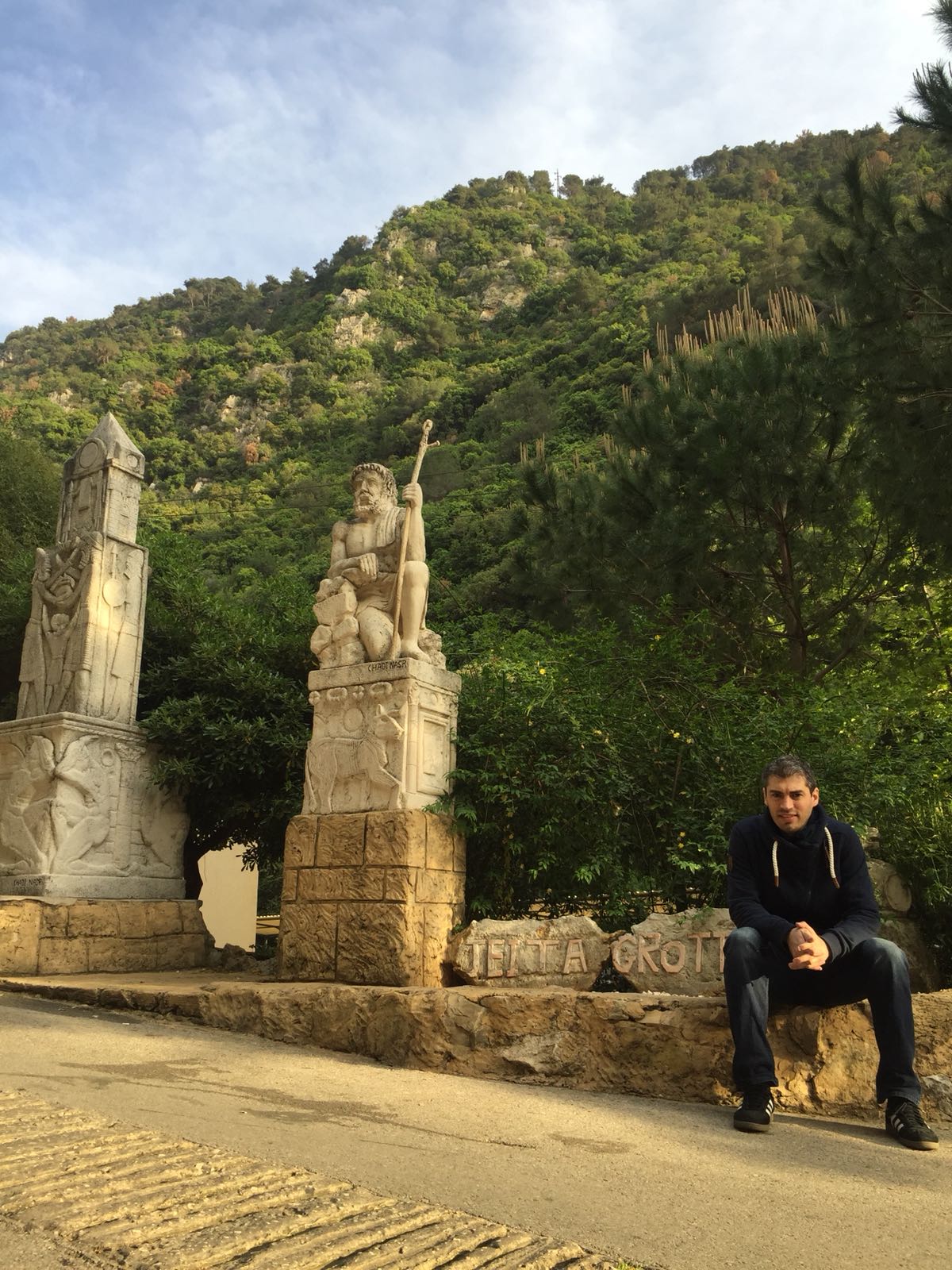
Conclusion
Beirut, a city worth visiting. It is a surprisingly expensive city that you wouldn’t expect from a Middle Eastern country. It is a beautiful city where you can find both French culture and Oriental influences. During our trip, we didn’t encounter any problems. Although there are warnings about terrorist activities in the border areas of Lebanon, Beirut and its surroundings are completely safe. However, we did have issues with the internet during the trip as it is very expensive. I remember they were charging around $40 for 1 GB of internet. Internet prices throughout the country seem to be high. While you’re there, you should also try traditional Arabic dishes. I particularly recommend the restaurant Abdel Wahab. When we were there, the actual restaurant was under renovation, so we ate at Abdel Wahab in the ABC Mall. The appetizers, in particular, are well-known. You can try Fattoush, Hummus, Mutabbal, Taboule, Kibbeh, and Manoush. They also have a special drink called Jellab, which is a mixture of rose water and grape syrup. It contains dates, pistachios, almonds, and hazelnuts. Traditionally, it is served cold. During our 4-day trip, we were able to visit Beirut city center, Harissa, and Jeita Grotto. Additionally, there are Baalbek and the ancient city of Byblos, as well as the Bekaa Valley, which are worth a visit, but I do not recommend the Bekaa Valley due to security concerns.
Fairuz
When mentioning Beirut, one should not forget Fairuz. She is an artist from Beirut and is considered one of the greatest artists of the Middle East. In particular, her song “Le Beirut” is something special. In my opinion, it is the most beautiful song ever dedicated to a city. The song is about Beirut’s lost years due to the war. Fairuz is one of the few artists who remained strong despite everything. Even during the civil war, she did not leave Beirut and rejected offers of refuge and work from other countries. During the war, the fighters found solace in Fairuz’s songs. This clearly demonstrates that she is the artist of the people and all social classes. Algerian leader Boumediene asked Fairuz for a special concert, but Fairuz declined, saying, “I am the artist of the people, and I do not sing my songs for an individual, but for the people.” In Lebanon, you will undoubtedly come across Fairuz and her songs. It would be advisable to learn a little about her beforehand so as not to feel alienated.
Finally, I would like to share the folk song mentioned in the appendix and a beautiful article about Fairuz. https://kronoshaber.com/tr/feyruz-yildizlarin-sarkisi
